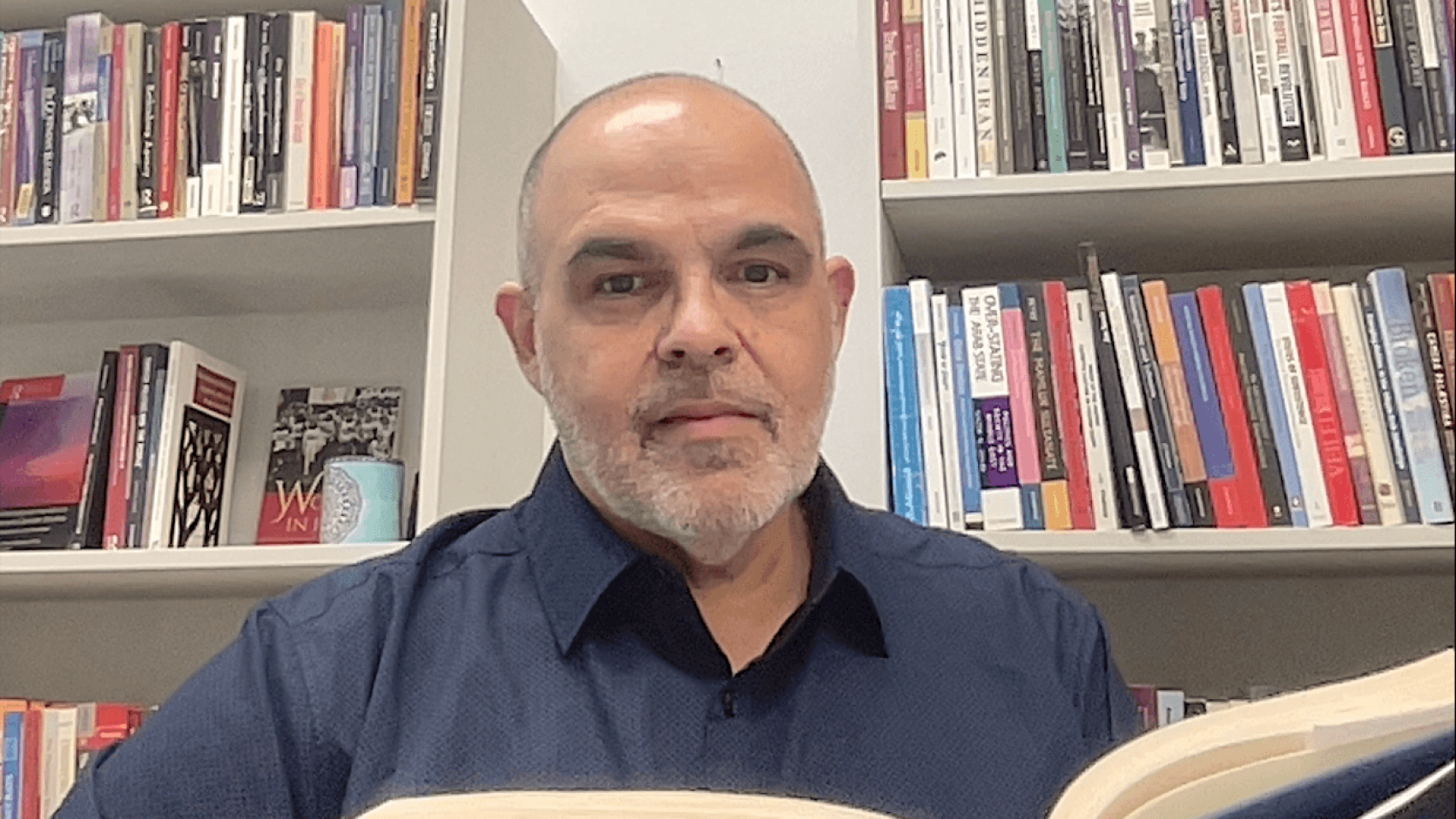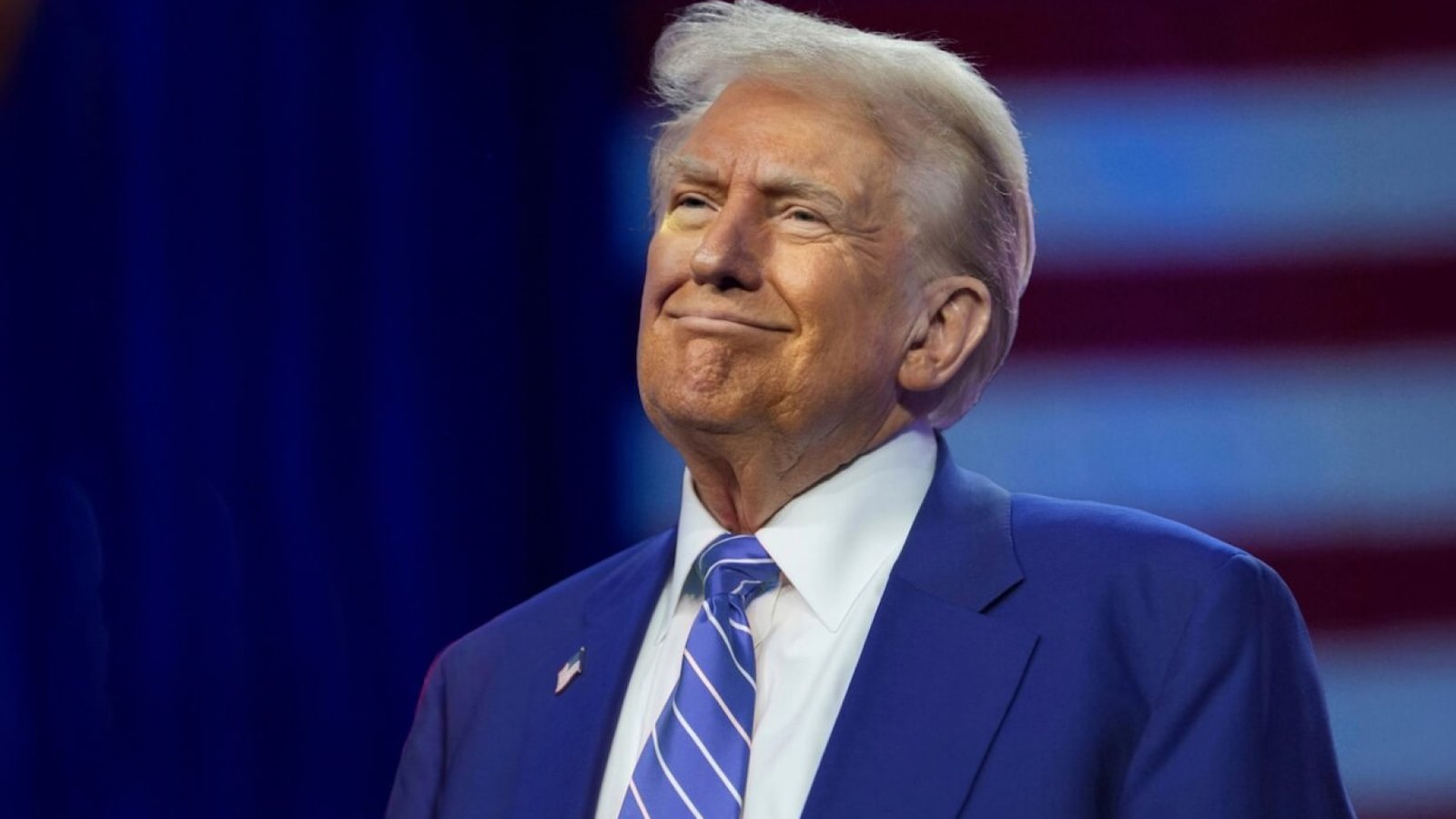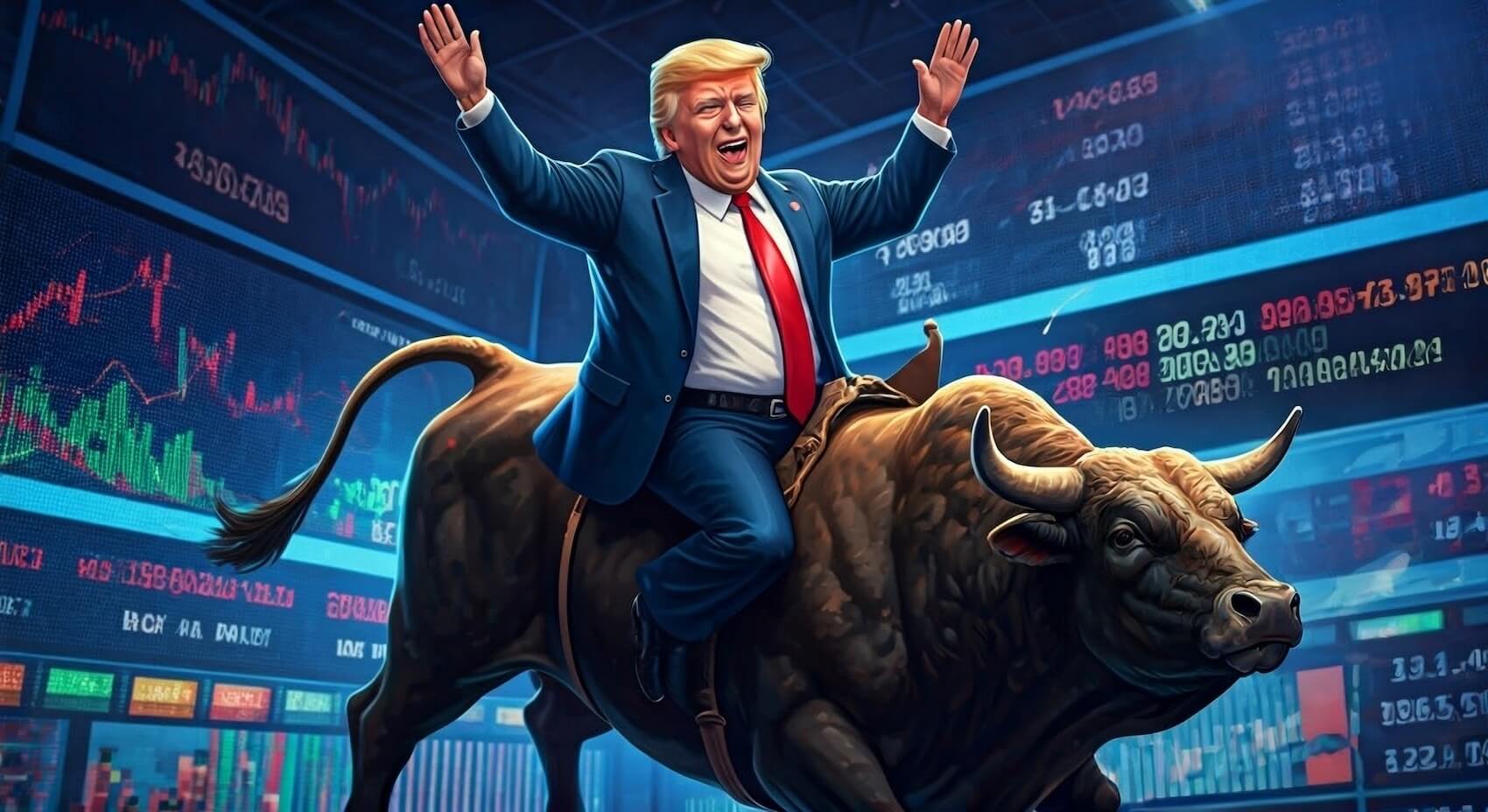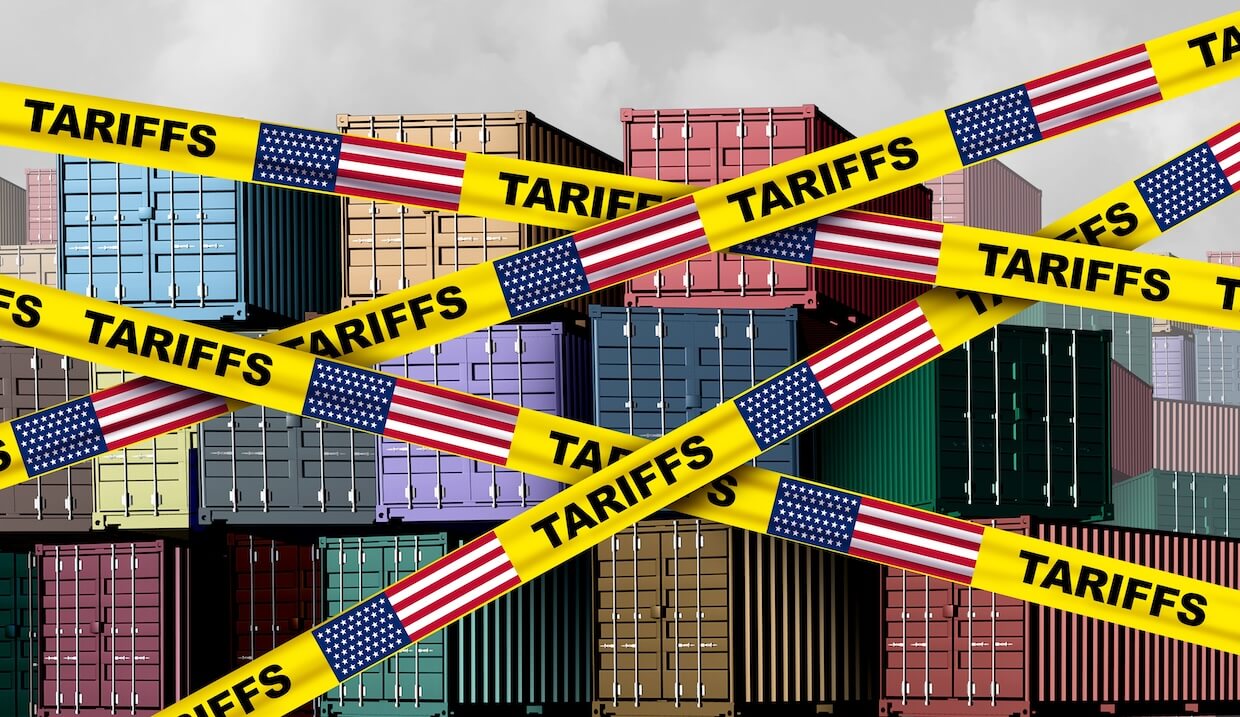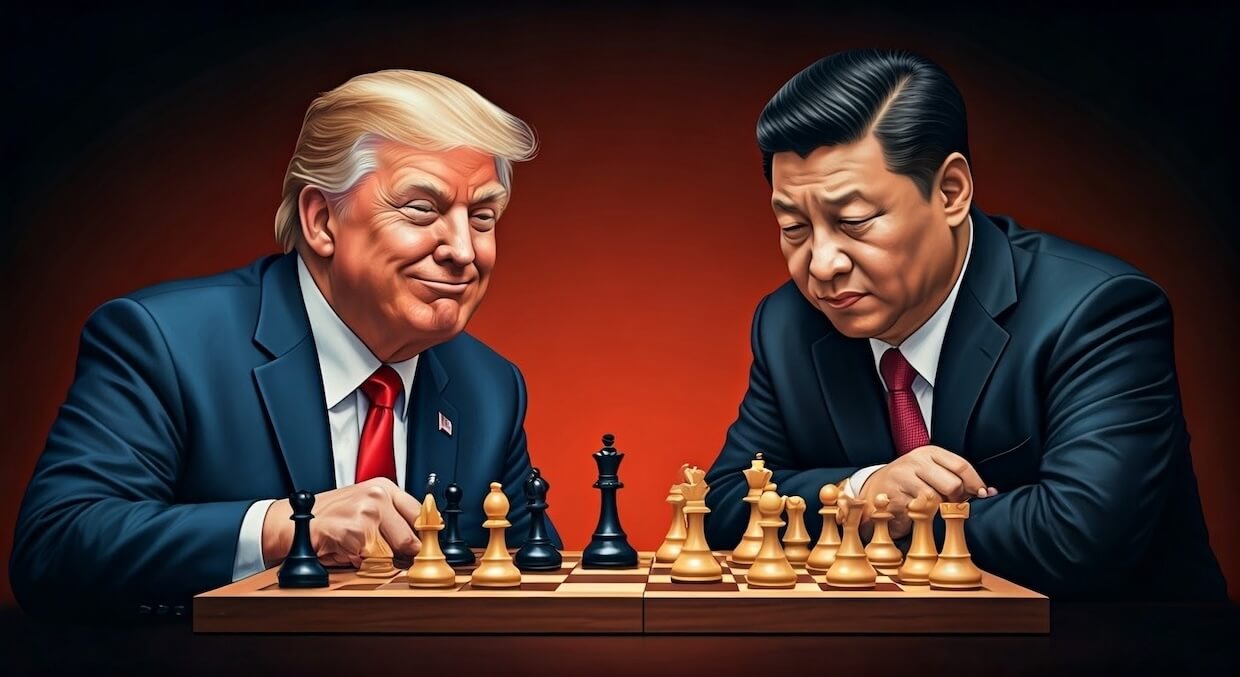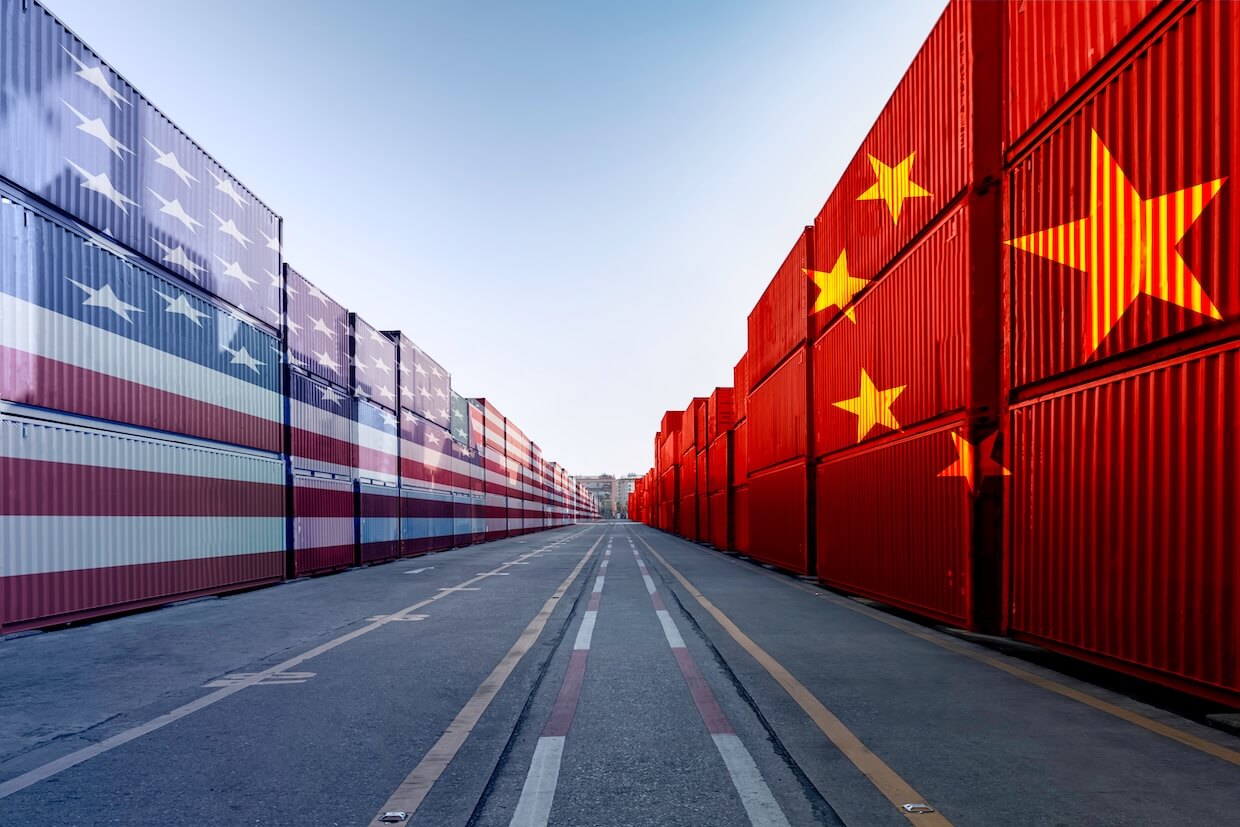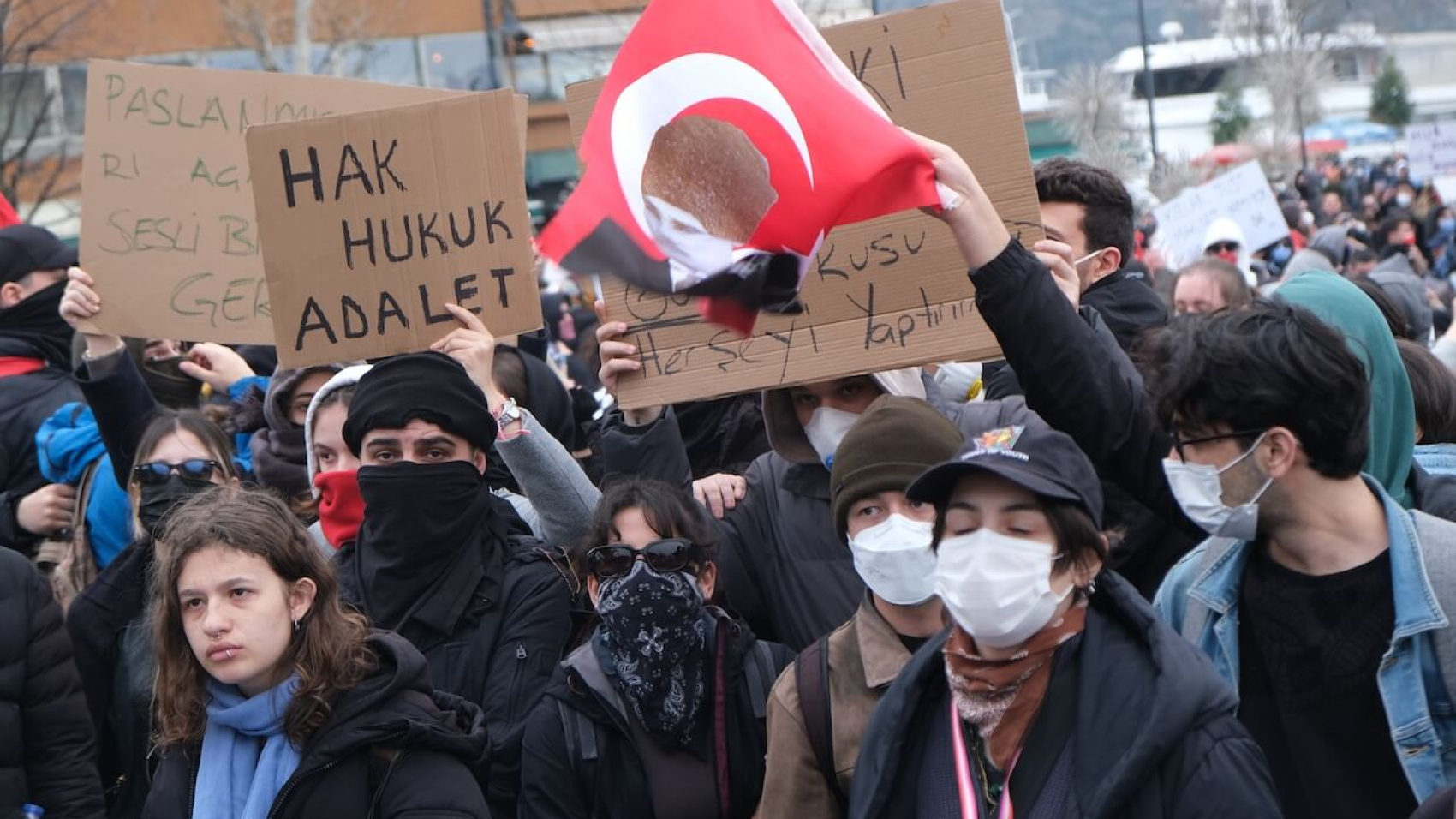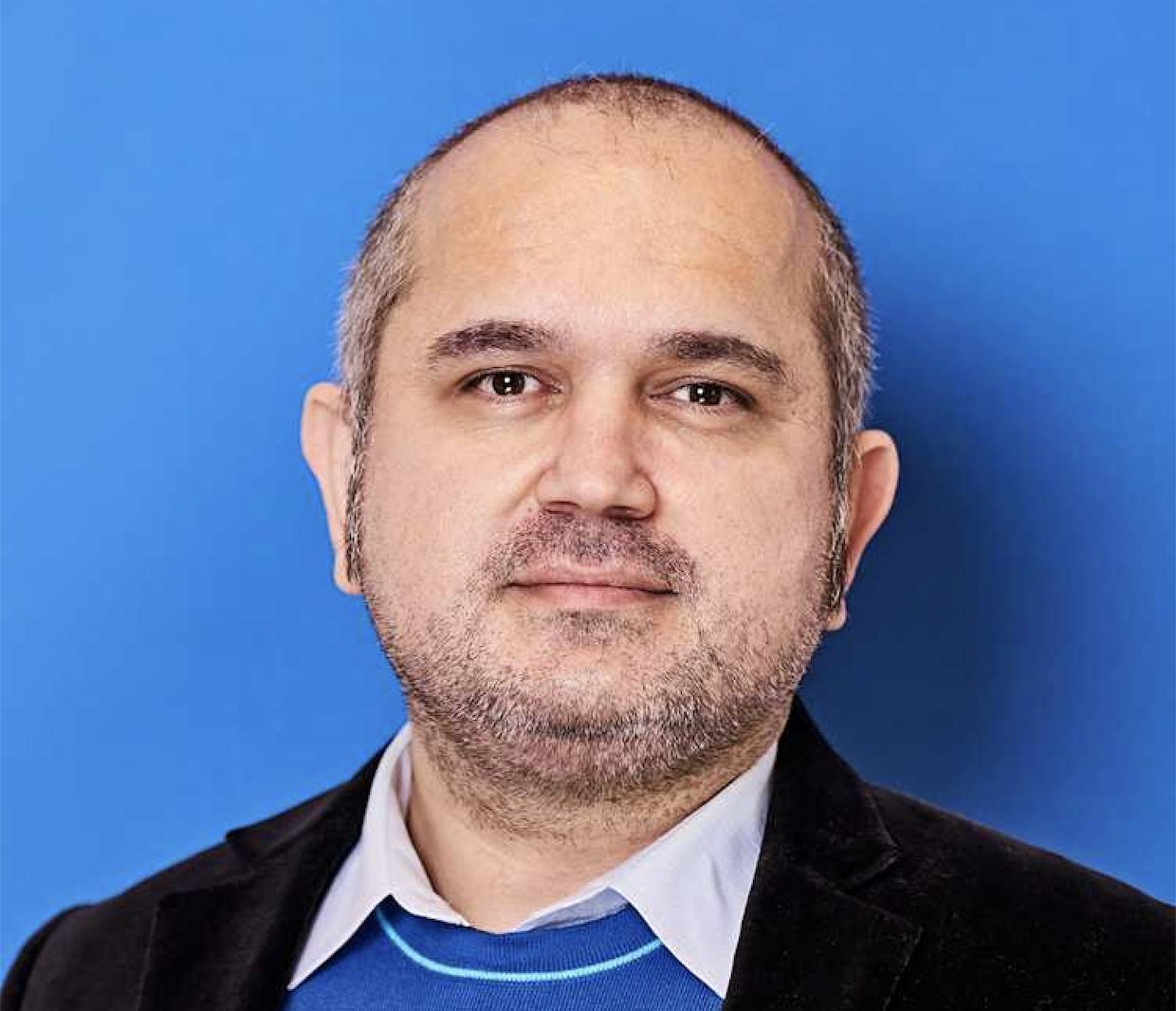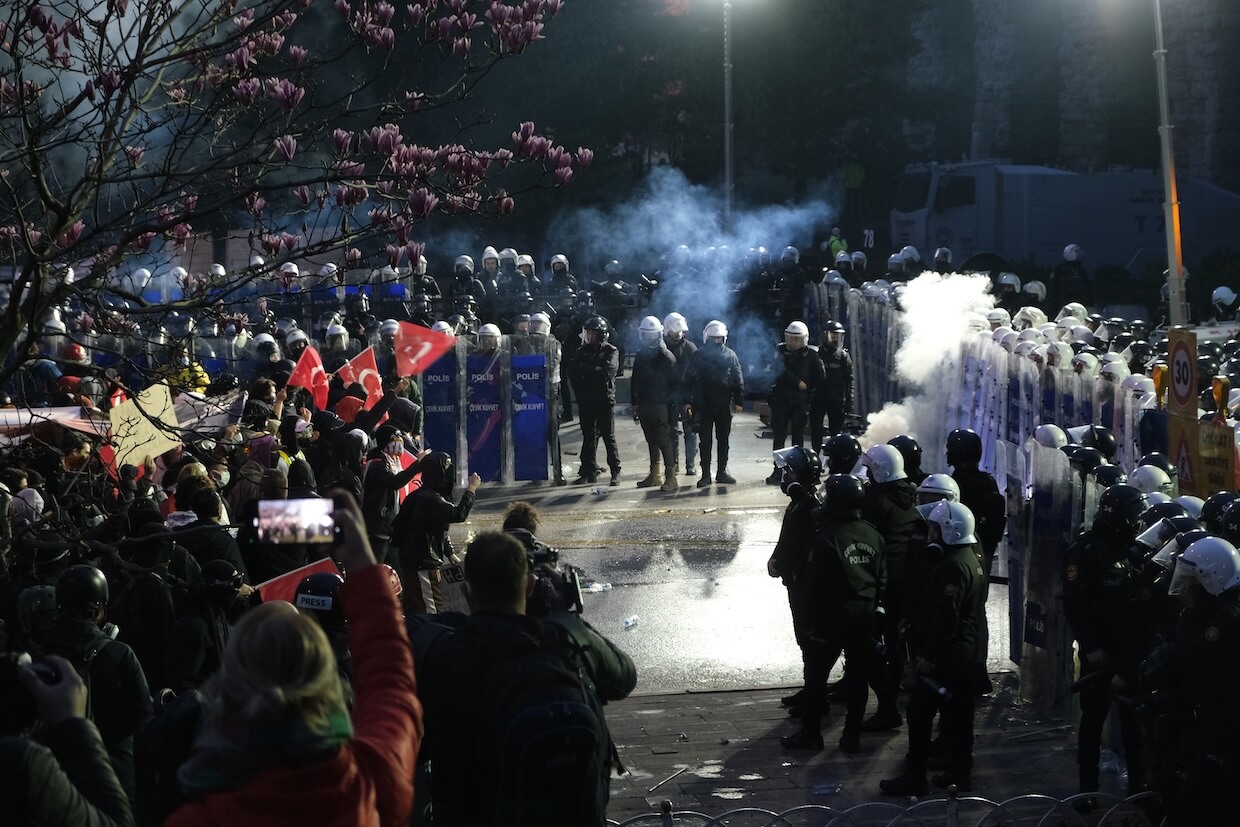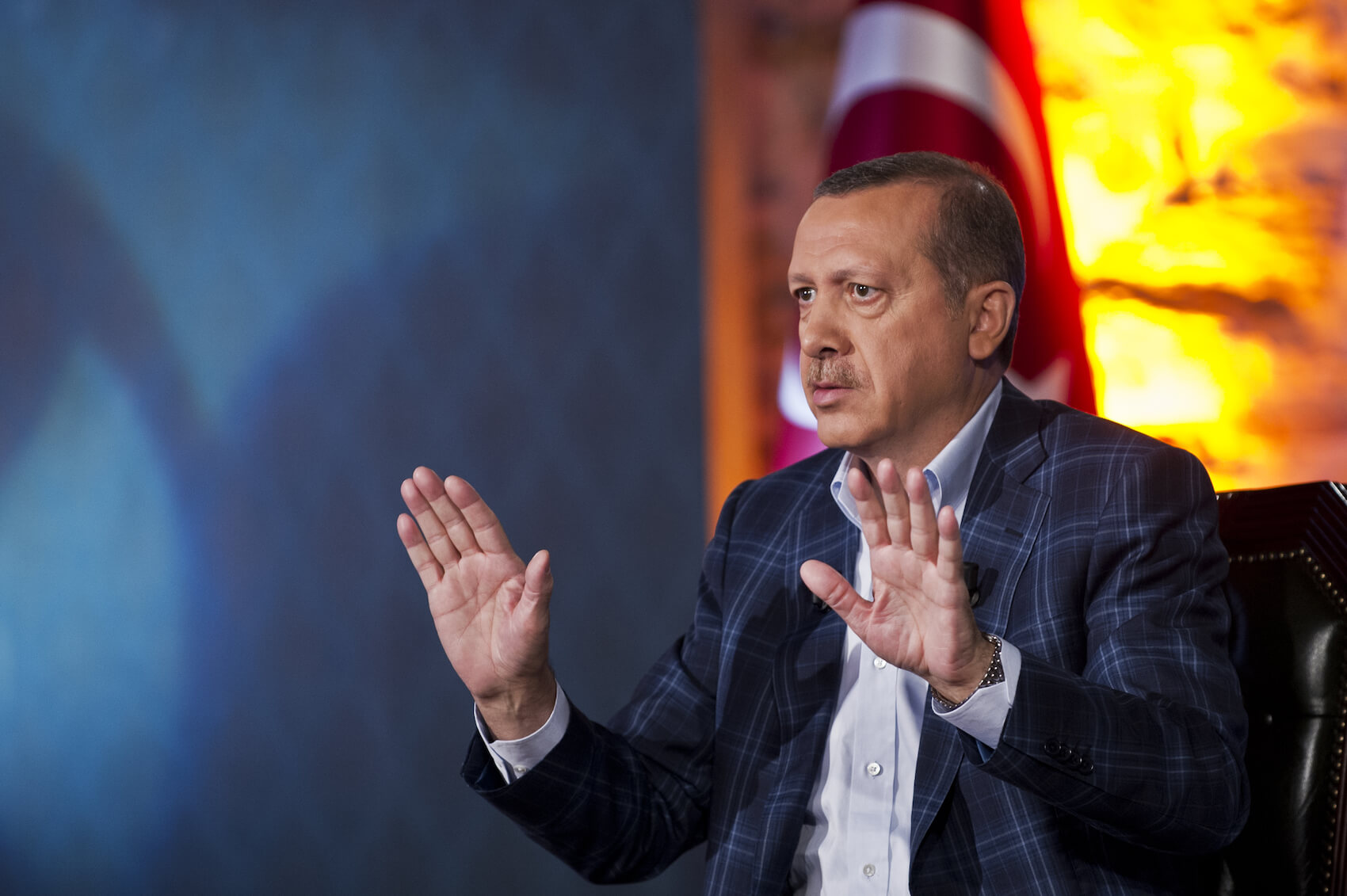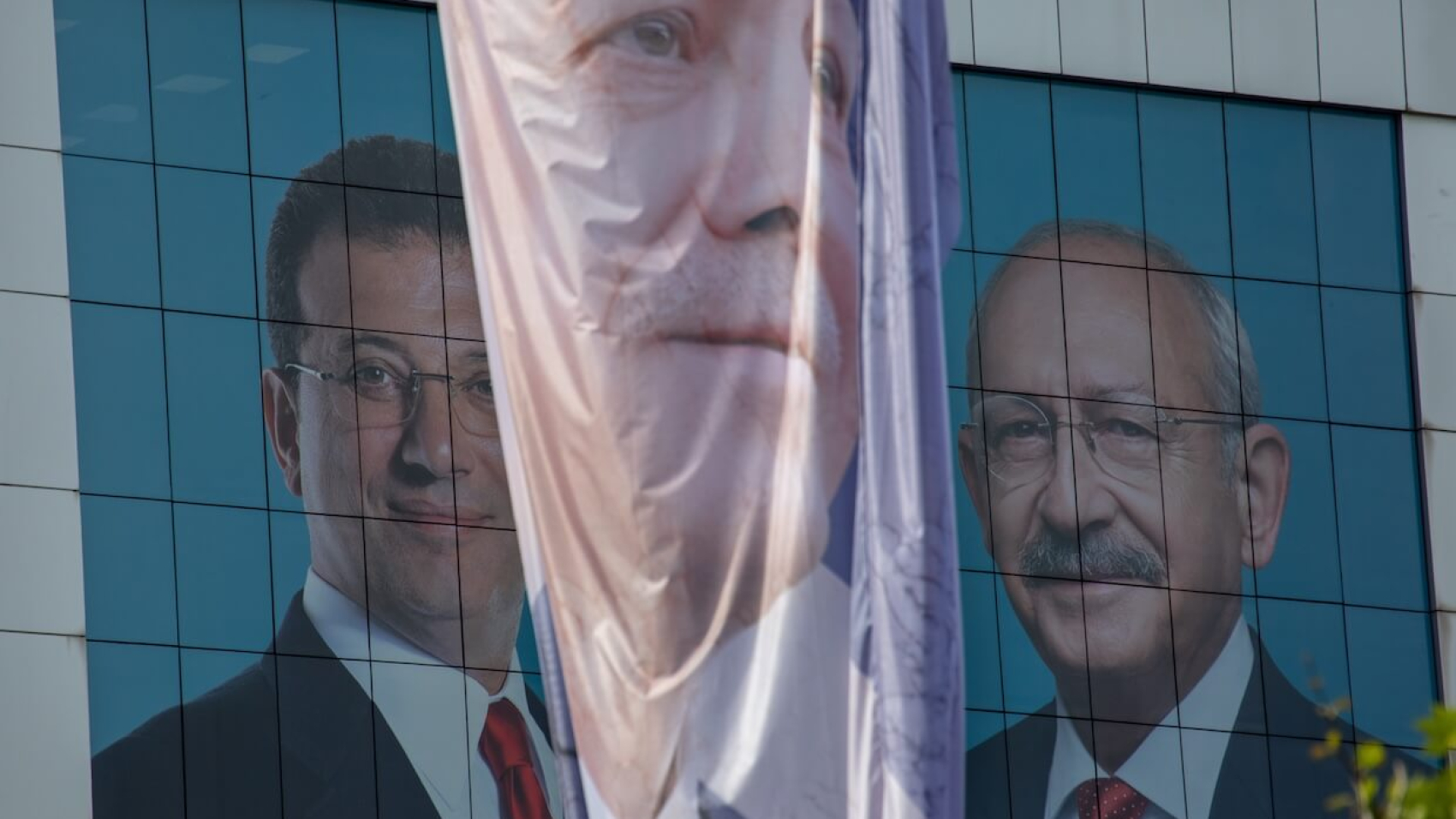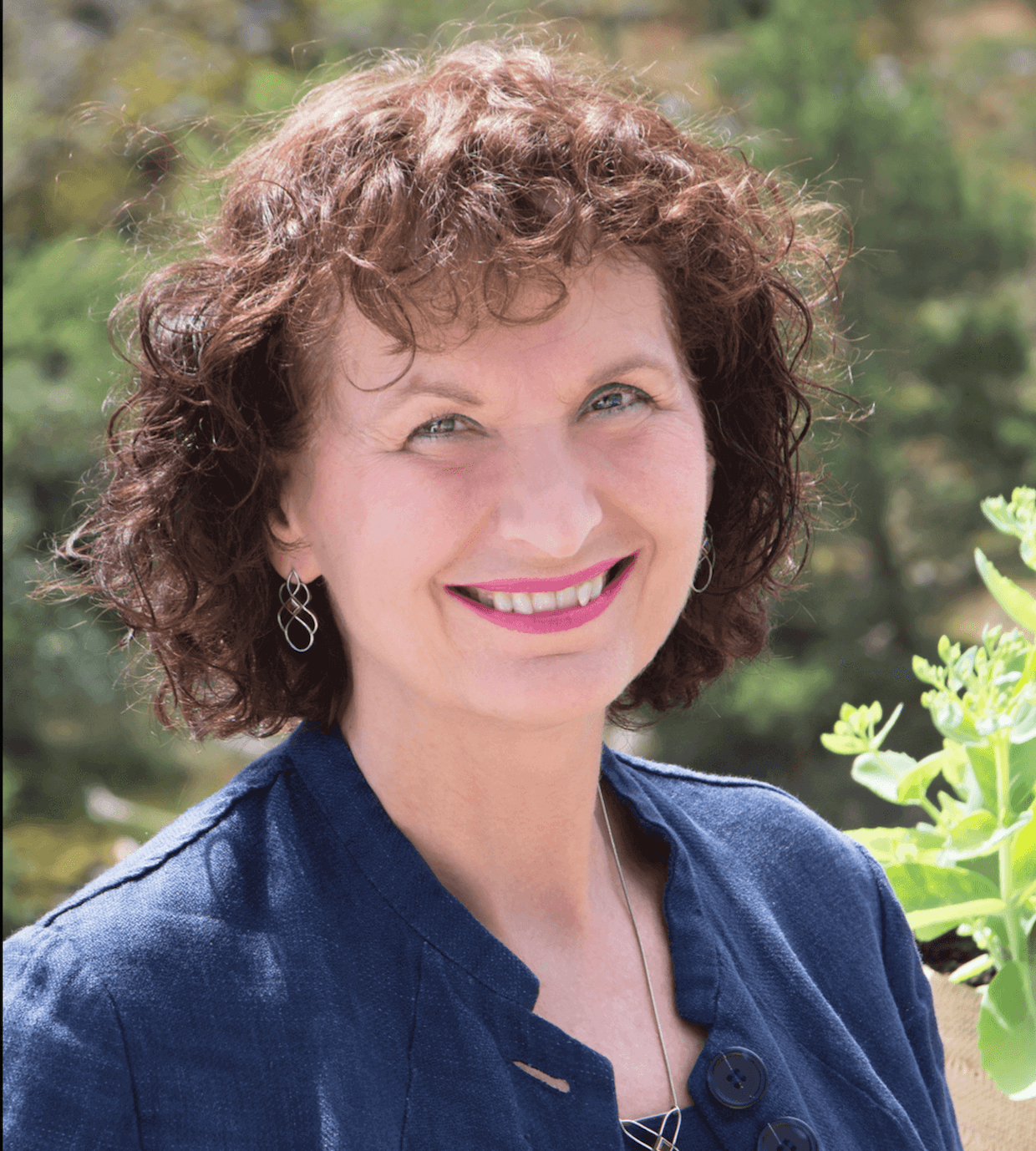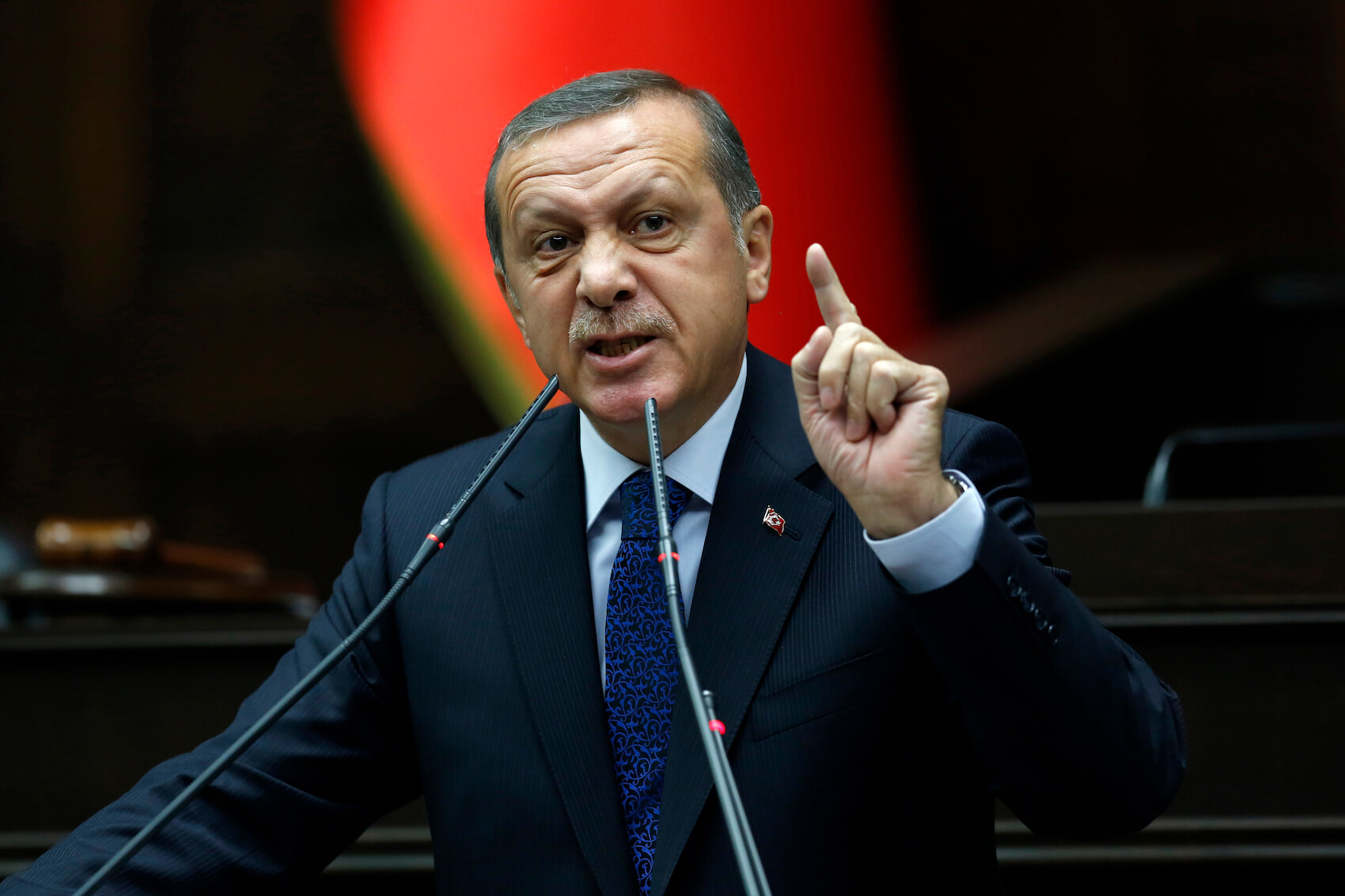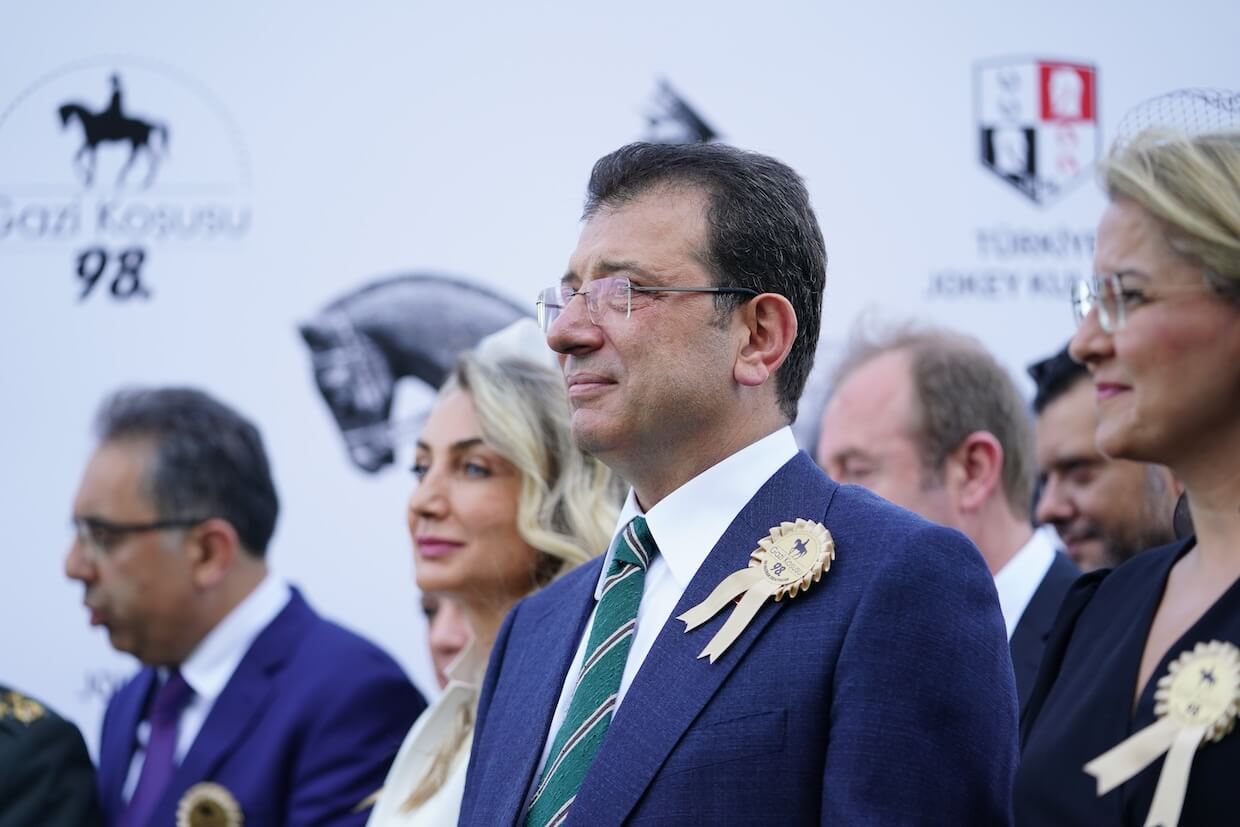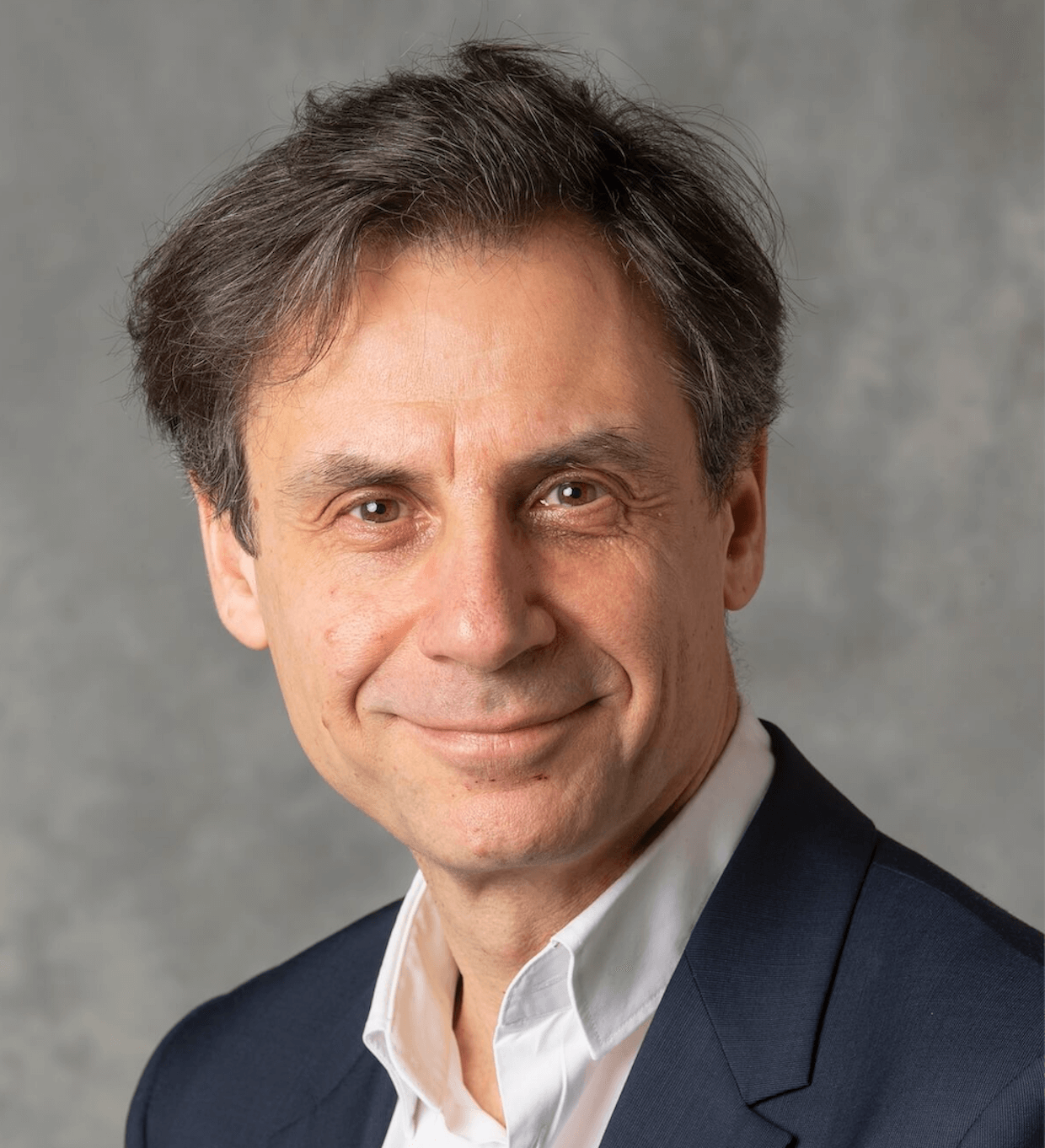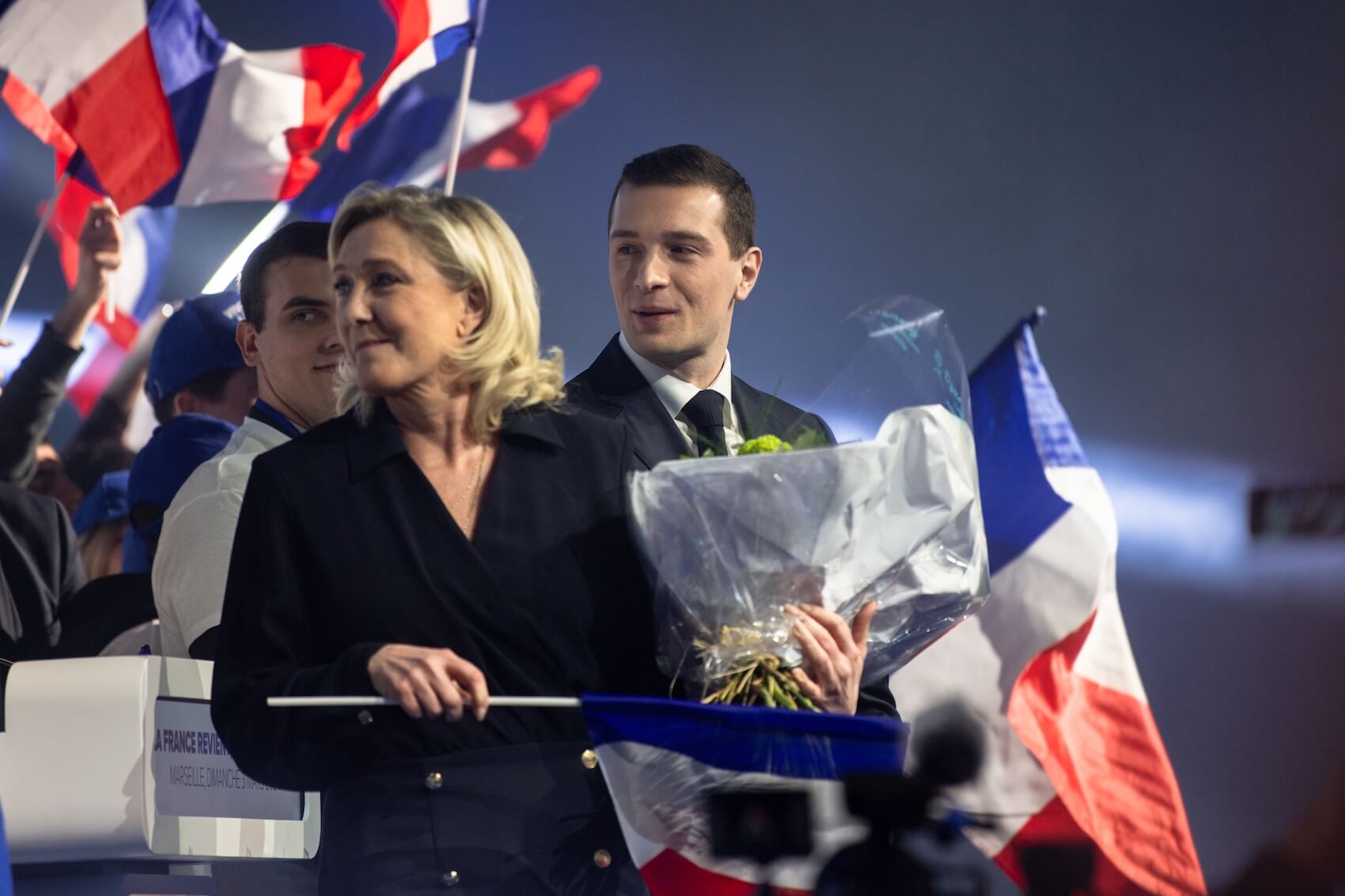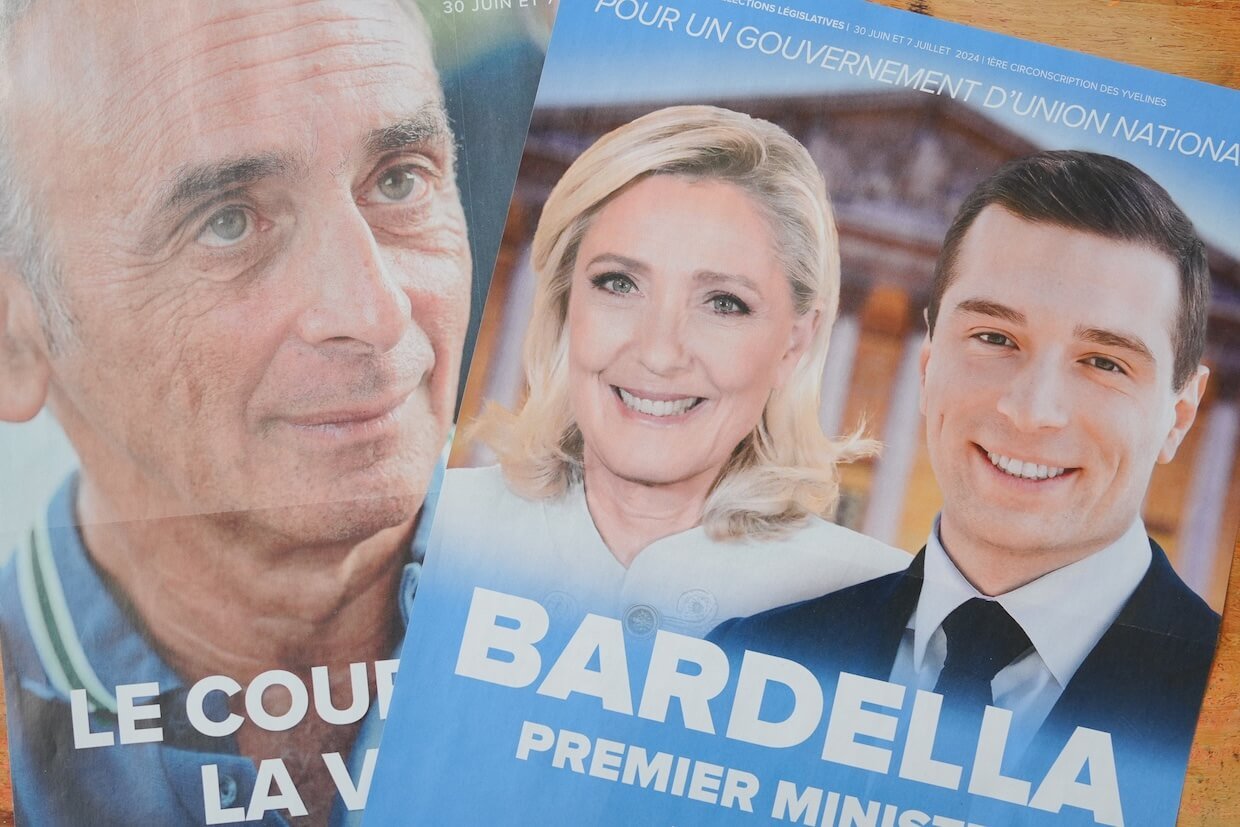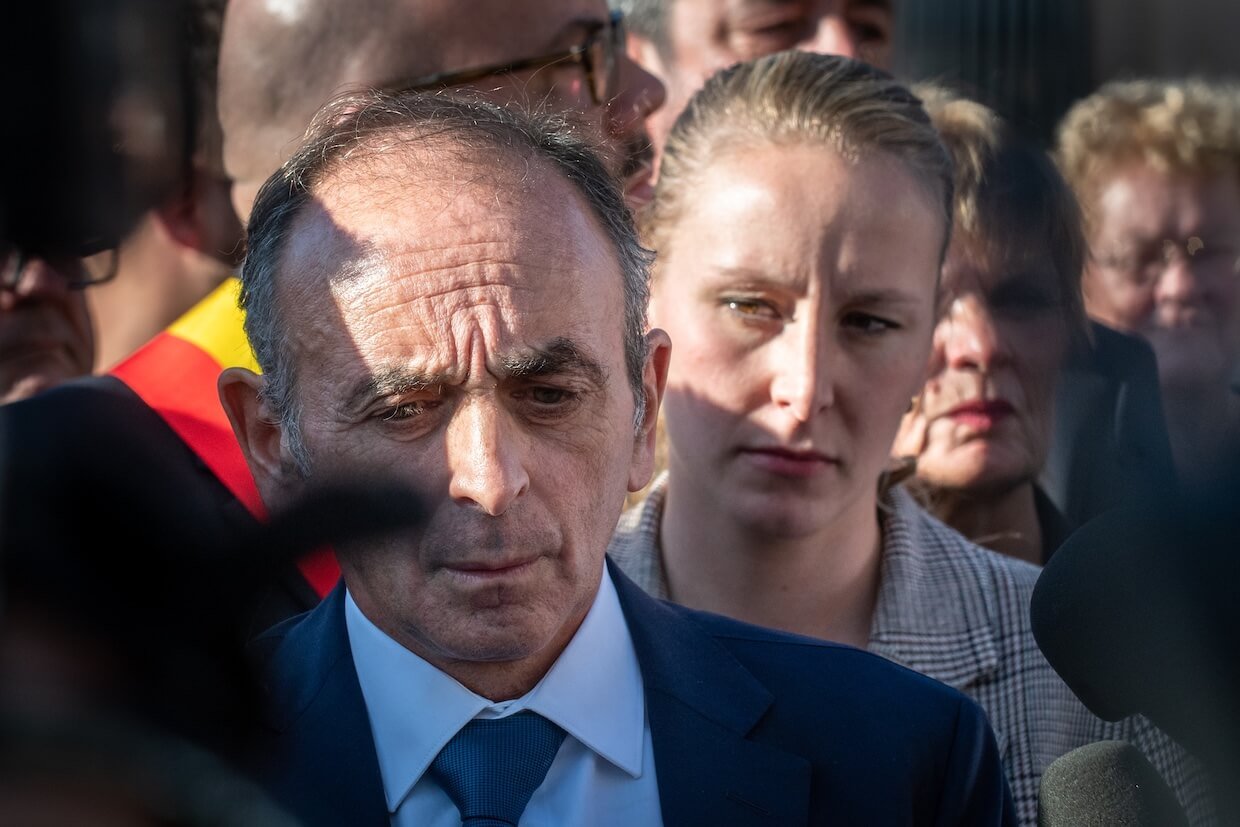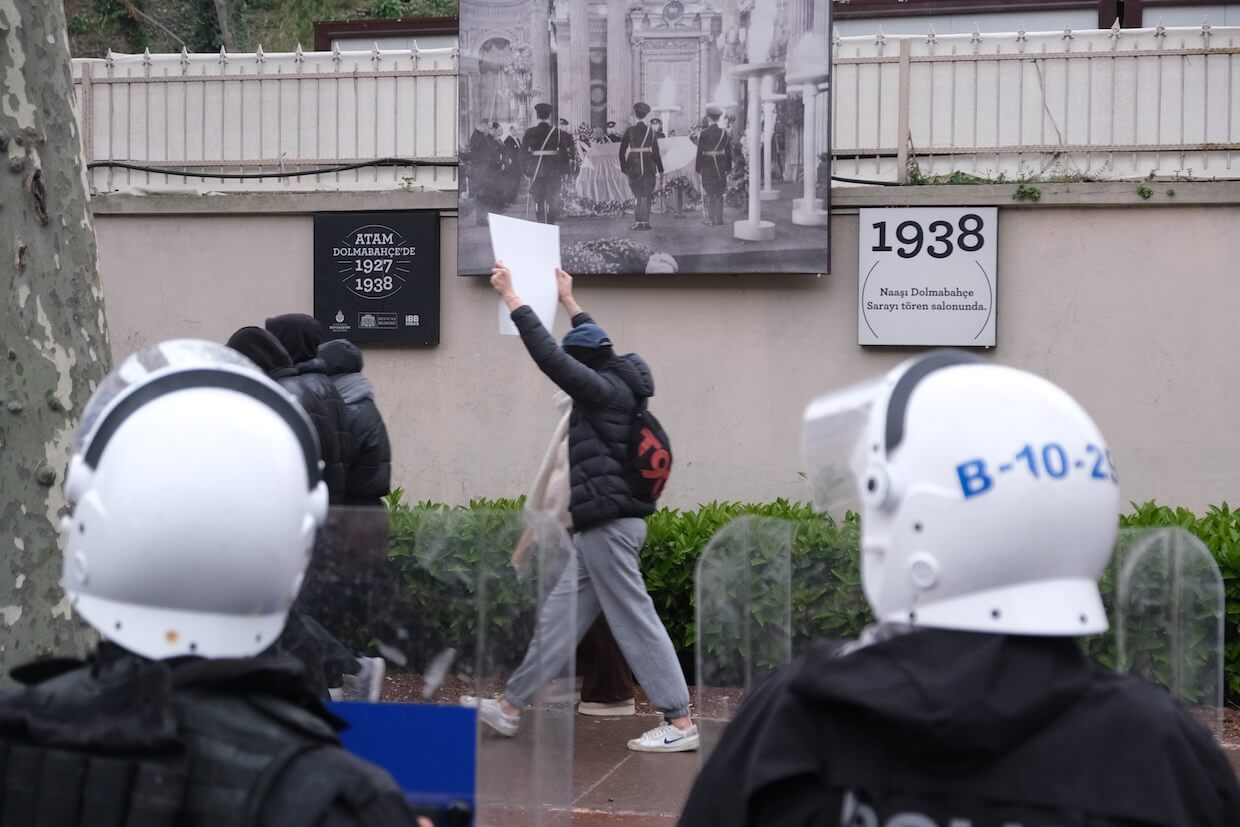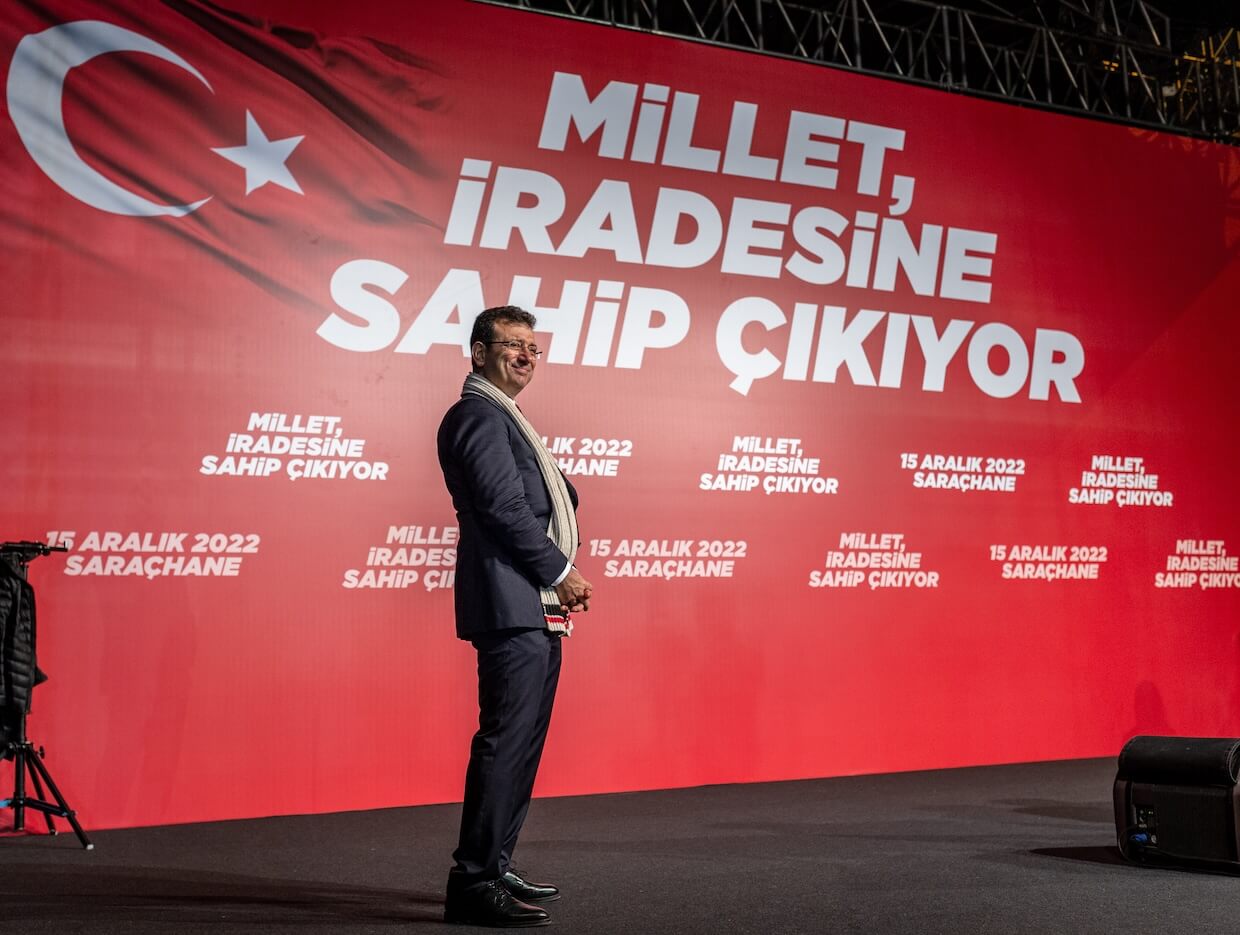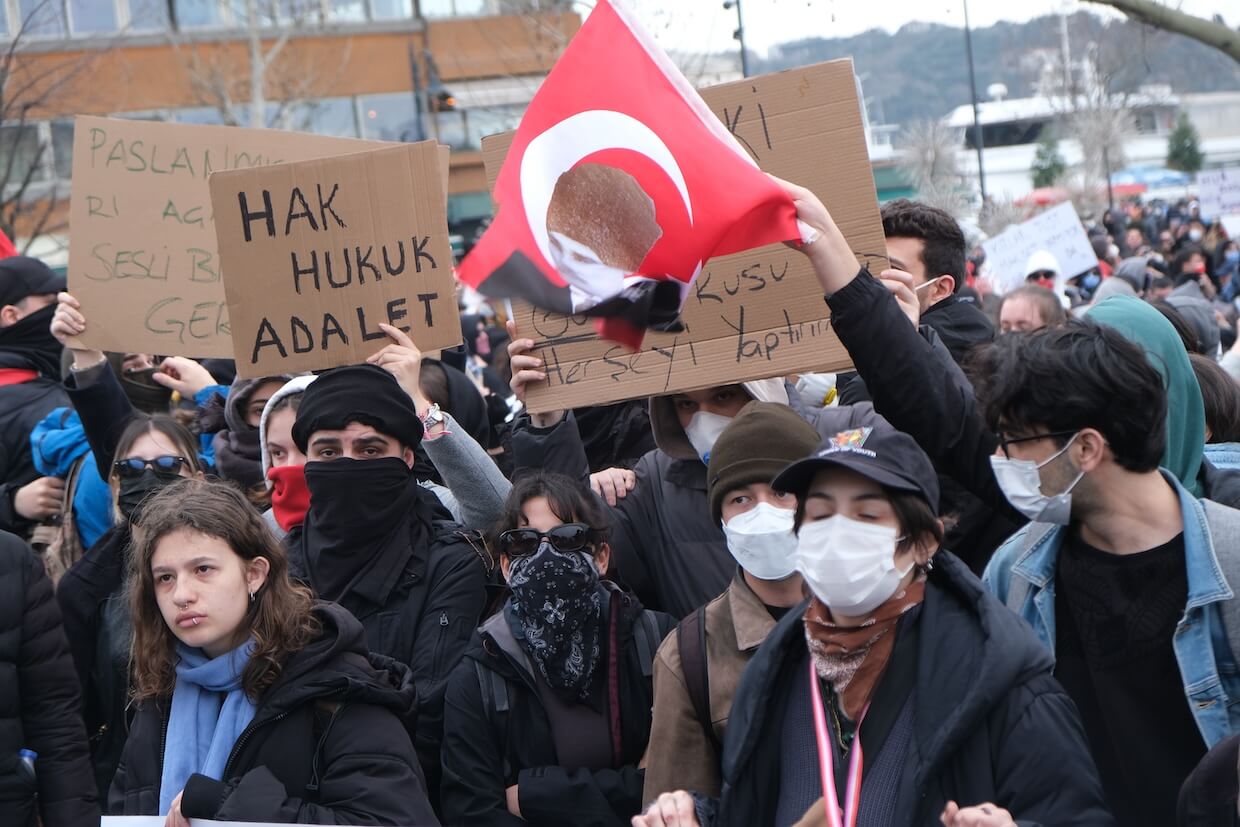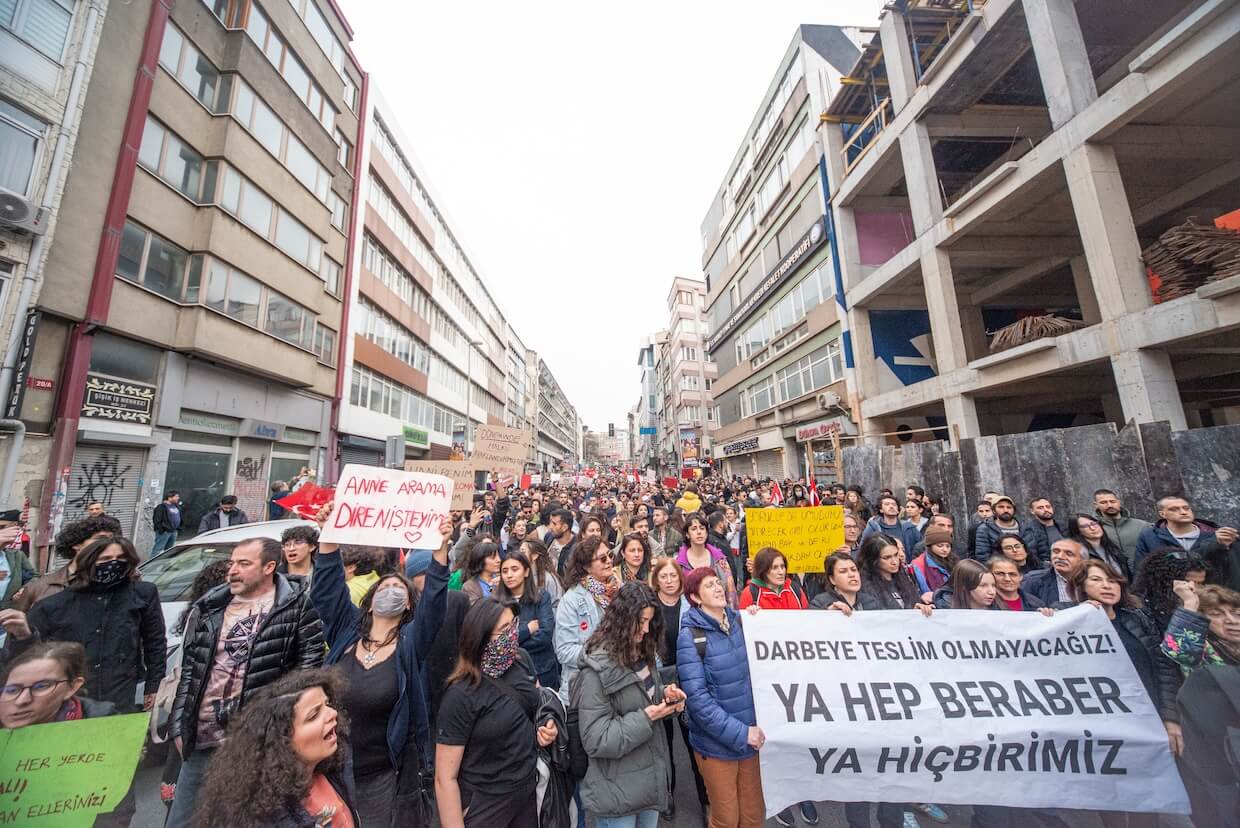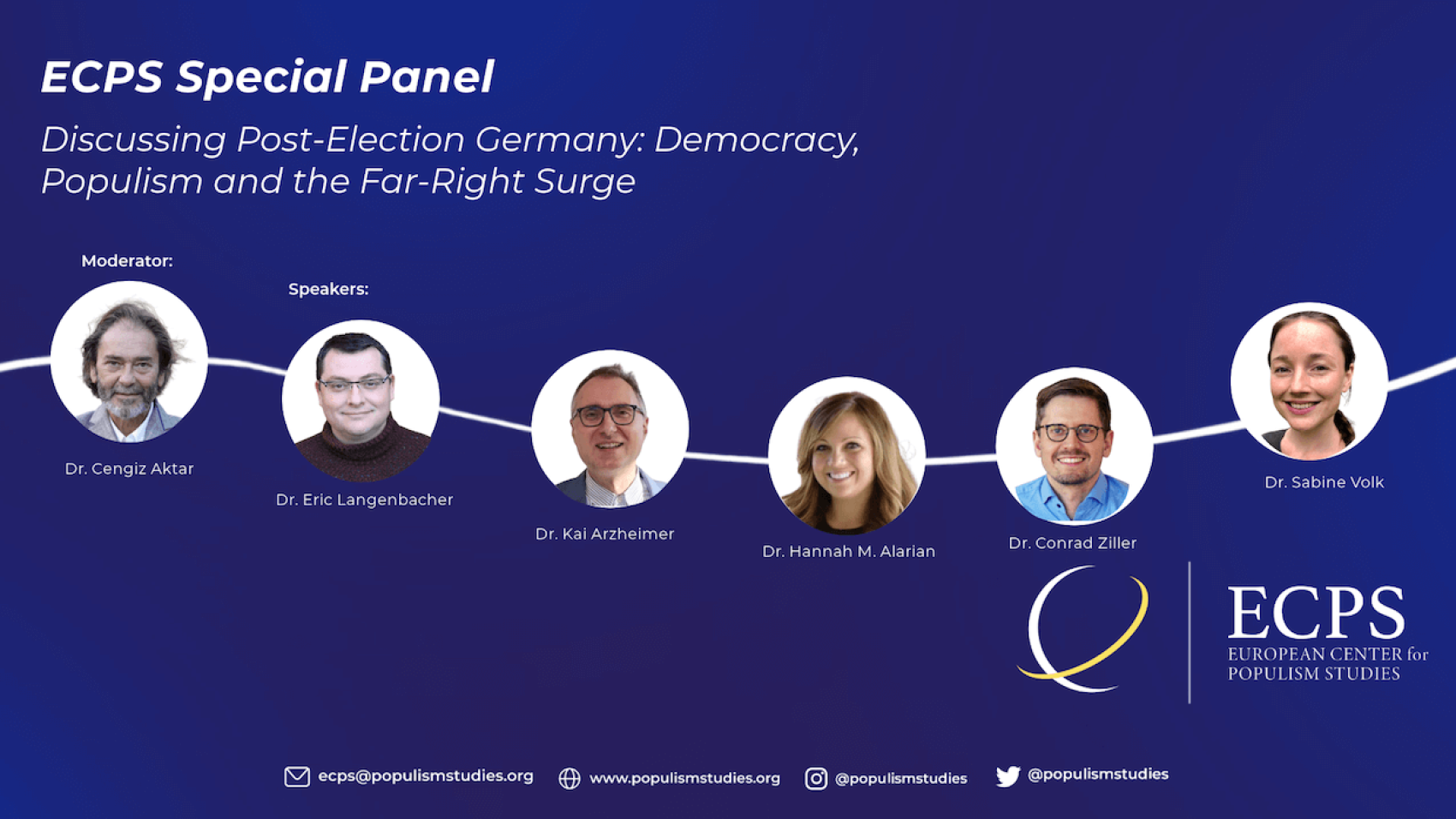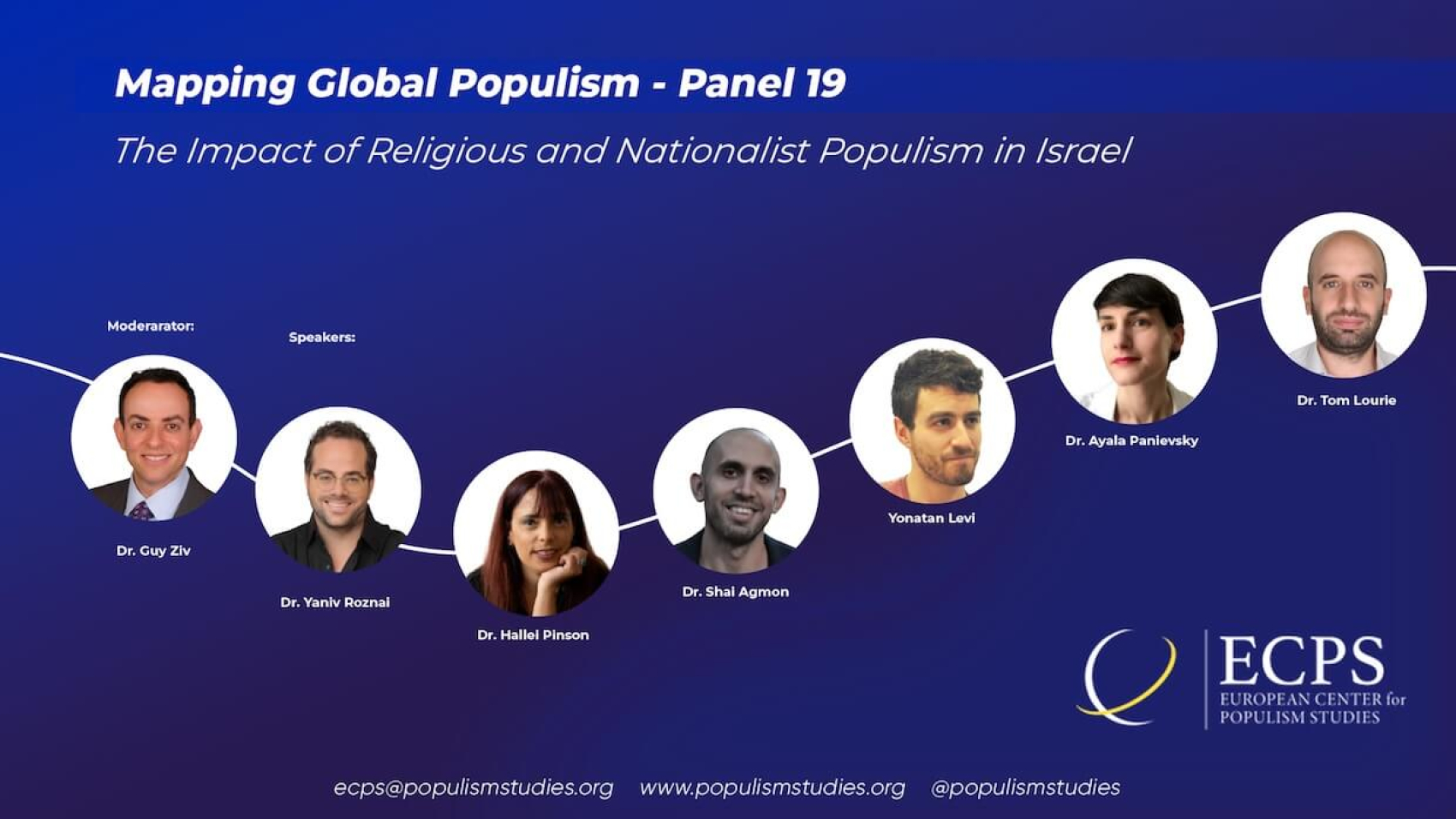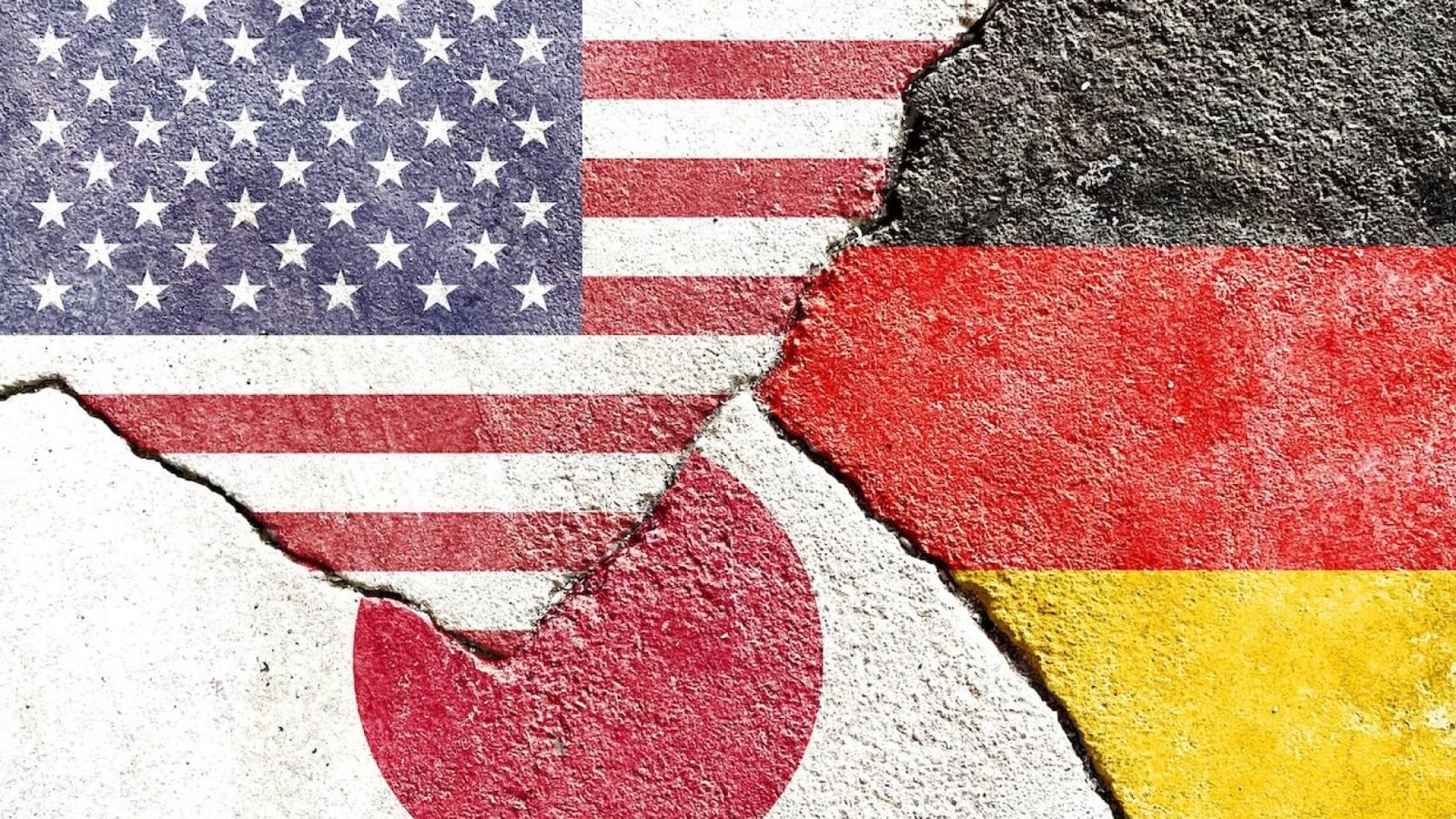“The more rigid the regime becomes, the more easily it may break,” warns Dr. Spyros Sofos in an illuminating interview with ECPS. Tracing the Erdogan regime’s shift from reformist Islamism to a personalized authoritarianism, Dr. Sofos highlights how the dismantling of institutional checks and grassroots engagement has deepened Turkey’s democratic crisis. He sharply critiques the EU and US for enabling this drift, arguing that their silence—rooted in strategic pragmatism over refugee control and regional stability—amounts to tacit complicity. As Erdogan’s rule grows more centralized and brittle, Dr. Sofos suggests its very inflexibility could be its undoing. Amid repression and international complacency, he insists, spaces for resistance persist—and the next rupture may come from within the regime itself.
Interview by Selcuk Gultasli
In a timely and far-reaching interview with the European Center for Populism Studies (ECPS), Dr. Spyros Sofos—Assistant Professor in Global Humanities at Simon Fraser University—offers a deeply informed and critical analysis of the Erdogan regime’s evolution into an increasingly rigid and personalized form of authoritarian populism. “The more rigid the regime becomes,” Dr. Sofos warns, “the more easily it may break.” Far from being a sign of consolidated power, he argues, the regime’s escalation of repression—most recently with the arrest of Istanbul Mayor Ekrem Imamoglu—betrays deep insecurity and structural fragility within a system that has steadily dismantled institutional checks and blurred distinctions between state, party, and judiciary.
Dr. Sofos traces how the AKP’s early reformist stance, driven in part by strategic engagement with European institutions, gave way to a calculated centralization of power following institutional resistance from the military and judiciary. He explores the AKP’s ideological recalibration—through religious nationalism, neo-Ottoman nostalgia, and pan-Turkic outreach—as a tactical means to expand and solidify its coalition amid economic turmoil and intra-Islamist fragmentation.
Yet just as trenchant is his critique of the European Union and the broader West, whose response to Turkey’s democratic backsliding has been marked by passivity and strategic self-interest. “Effectively, what the EU and the US have been doing is wanting Turkey to ensure that the masses of displaced people within its territory would not move towards the West,” he states bluntly. In prioritizing border control, security cooperation, and transactional diplomacy over democratic principles, Western powers have turned a blind eye to the regime’s authoritarian escalation—signaling tacit approval through their silence. Dr. Sofos calls out this hypocrisy, echoing Imamoglu’s own condemnation of European leaders for abandoning not just him personally, but the very idea of democracy in Turkey.
He also warns that the West’s failure to push back meaningfully against Erdogan’s authoritarian turn—driven by domestic electoral concerns and geopolitical calculus—risks normalizing the erosion of democracy, both in Turkey and beyond. With comparative insights from Hungary, India, and Israel, Dr. Sofos situates the Turkish case within a wider global trend of populist-authoritarian drift, but insists that this is not a one-way trajectory. The regime’s internal contradictions, coupled with mounting grassroots resistance and international hypocrisy fatigue, may yet create opportunities for democratic renewal.
This interview is not only a sobering account of democratic decline in Turkey, but also a compelling indictment of Western complacency in the face of it.
Here is the lightly edited transcript of the interview with Dr. Spyros Sofos.
Ottoman Nostalgia as a Tool of Populist Reinvention
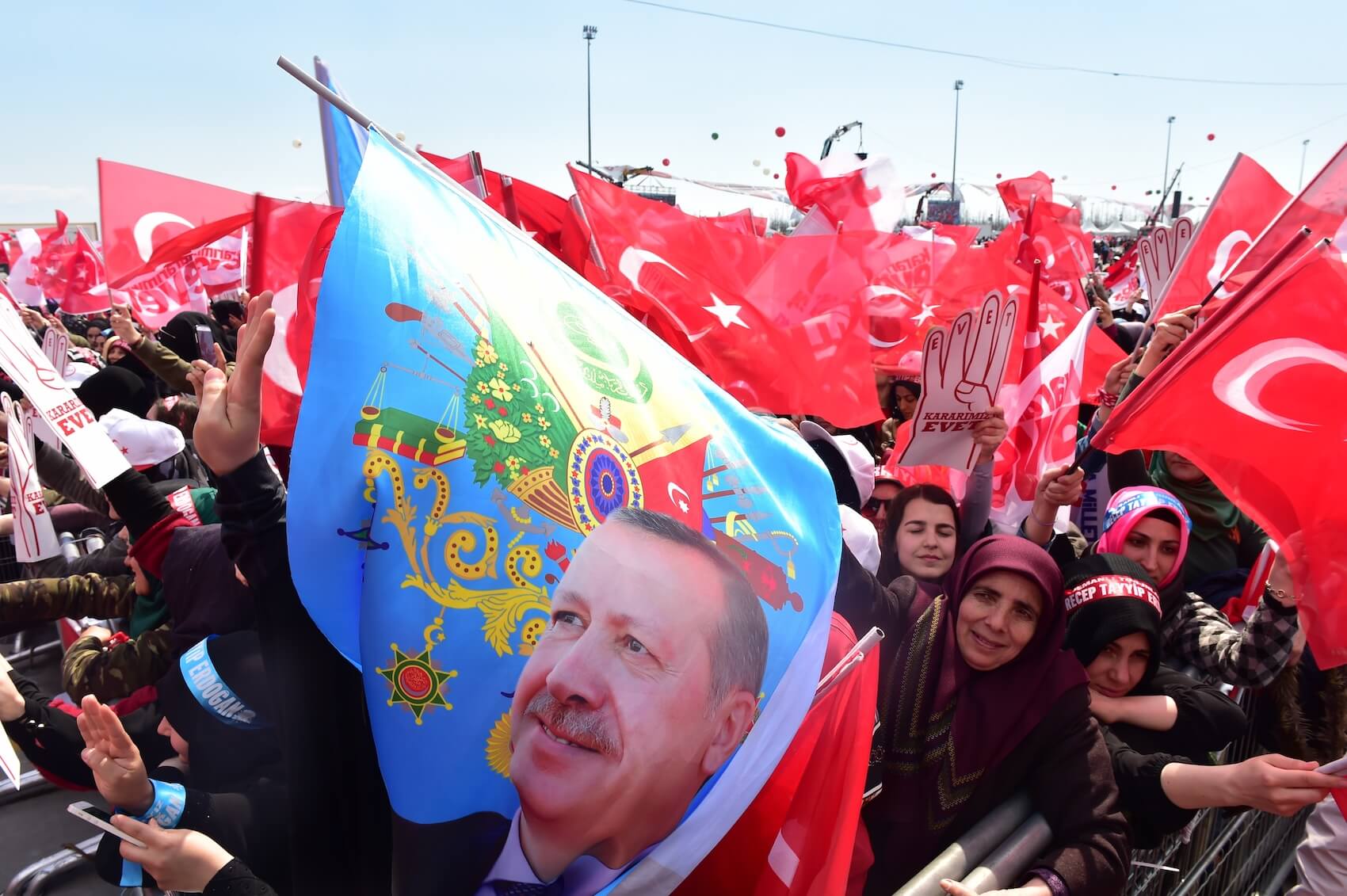
Professor Sofos, thank you very much for joining our interview series. Let me start right away with the first question: How do you interpret the Erdoğan regime’s mobilization of Ottoman nostalgia in both domestic and international contexts as part of a broader populist-authoritarian narrative?
Dr. Spyros Sofos: Thank you for having me. That’s a very interesting question, as there has been considerable discussion about neo-Ottomanism and the broader concept of Ottoman nostalgia. I believe the Erdogan regime needed a narrative that could effectively counter the one developed by the Kemalist regime over the past century. This new narrative serves several purposes.
The first is linked to the regime’s reinterpretation of history—particularly evident in debates around the reconversion of Hagia Sophia and other Christian monuments. Erdogan’s government has framed the Justice and Development Party (AKP) constituency as victims whose sovereignty was denied under the Republic for 100 years. In that context, a return to Ottoman nostalgia becomes a way of reclaiming a past where, ostensibly, there was more sovereignty and the people were heard. This re-imagined past helps construct an alternative vision of popular sovereignty, centered around the AKP’s base—and, I would argue, much of the nationalist constituency as well.
The second reason relates more to the interests the current leadership perceives as central to Turkey’s role both domestically and internationally, as well as to the political elite’s own strategic goals. For example, we see Ottoman nostalgia being used in foreign policy to justify, or at least lend legitimacy to, expanded relationships with countries that Turkey sees as pivotal—not only in its immediate region but also across Africa.
A striking example is Turkey’s presence in the Sahel and West Africa. The invocation of Ottoman-era connections is used to frame Turkey’s involvement in countries like Somalia—not only in humanitarian terms but as part of a broader strategic interest, grounded in a historical narrative of Ottoman reach. This is, of course, a very flexible interpretation of history, but one that the regime has used effectively.
This pattern also applies to Turkey’s outreach in the Balkans—something that began under Turgut Ozal. In countries like Bosnia, North Macedonia, and Albania, there’s a strong emphasis on rekindling historical and cultural kinship, often under the umbrella of shared Ottoman heritage.
Interestingly, the outreach to Central Asia—while unrelated to the Ottoman Empire—is also wrapped into this broader narrative. This connection seems driven either by economic interests or by a pan-Turkic nationalism that predates the AKP. So while neo-Ottomanism features prominently in both domestic and foreign policy, the regime also draws on other strands of historical memory to shape its identity and strategy.
From Reform to Repression: The Strategic Evolution of Political Islam under the AKP
How has political Islamism under the AKP evolved from a reformist or counter-hegemonic force into an ideological tool for authoritarian consolidation and state-led populism?
Dr. Spyros Sofos: I think that’s an important question. Political Islam—broadly speaking—had long been under threat from Turkey’s military, judiciary, and bureaucratic institutions before the AKP’s first electoral victory. In those earlier years, Islamist politicians were cautious in how they criticized the state and its institutions.
In the first five or so years of the AKP government, we saw what some scholars have called a “politics of patience”—a cautious, incremental approach to reform. There were several reasons for this. First, the AKP sought to emphasize its commitment to European institutions and to the broader European integration project. As such, it had to present itself as a genuinely reformist party.
While it may sound a bit cynical to frame it this way, this positioning made it much harder for the military and judiciary to halt the AKP’s political momentum. After all, the AKP was arguably the most pro-European and pro-reform force in Turkish politics at the time. Any attempt to stop it would likely have triggered significant Western backlash, possibly even sanctions. With hindsight, I now see this as a carefully calculated strategy. At the time, I was quite hopeful—thinking that this opening could bridge the divide between the “old regime” and the emerging Islamic-oriented political elite. But in retrospect, it seems it was more about ensuring the survival and viability of Erdogan’s political project.
The so-called “e-coup” during the 2007 presidential election, when Abdullah Gul’s candidacy was being obstructed by military and judicial actors, marked a turning point. This intervention allowed Erdogan and his allies to pivot from their cautious stance to a more confrontational and assertive posture.
So, while the AKP initially positioned itself as reformist out of necessity, the institutional resistance it faced—particularly from the army and judiciary—created an opening for it to strike back sooner than it might have otherwise. And unfortunately, this shift happened at a time when civil society lacked the strength to act as an effective check on power.
Islamist Nationalism Rebranded: Survival Politics in Erdogan’s Turkey

Do the regime’s increasingly religious-nationalist narratives reflect a deeper radicalization or strategic recalibration—and to what extent do these still resonate with the AKP’s traditional base amid economic hardship and intra-Islamist fragmentation?
Dr. Spyros Sofos: That’s one of the most interesting and challenging questions I’ve had to think about over the past couple of years. I believe we need to complicate the idea of the AKP as simply an “Islamist” party, full stop. It’s something more complex—and its ideology has evolved, largely in response to shifting constituencies that it needs to mobilize for political survival.
Over the years, we’ve seen alliances like the one with the Nationalist Movement Party (MHP) and Devlet Bahceli, which introduced a significant nationalist component into the AKP’s political orbit. Most recently, in the 2023 presidential elections, we witnessed a major push to win over nationalist voters. While Islam isn’t necessarily incompatible with nationalist currents in Turkey, this required the AKP to recalibrate its discourse in a way that differed substantially from its earlier messaging.
The party continues to promote a form of nationalism infused with Islamic elements, but it’s no longer offering the same vision as in the early 2000s. It’s certainly not a reincarnation of Alparslan Turkes-style nationalism either—but it has shown a willingness to experiment with different formulations of Turkish nationalism in order to appeal to broader political forces and secure electoral dominance.
This ideological flexibility is significant. Some of the intellectual figures in the AKP’s broader sphere of influence now engage with strands of nationalist thought that were previously absent from Islamist political discourse in Turkey.
At the same time, I don’t believe Islam has been displaced from the core of the AKP’s identity. But it has never been the only element. From the beginning, the party positioned itself as a voice for the downtrodden—regardless of their level of religiosity or piety. It’s always sought to build a broader coalition, and I think that remains true today.
In your work on the Gezi Protests, you emphasized the significance of bottom-up resistance. How do the dynamics of current mass protests compare to the 2013 Gezi movement in terms of ideological coherence, regime response, and potential for catalyzing long-term democratic transformation?
Dr. Spyros Sofos: That’s also the million-dollar question. So let me just try to unpack a few things about Gezi. I think Gezi was unique in the sense that it was not a movement that wanted to change a government. It was not aspiring to play a political role in the way, for example, that political parties would. And I think that was the secret behind its success and its failure at the same time. So it was a movement about bringing some sort of freedom into what Habermas would have called the life-world.
It was a movement that was against the policing of everyday life, people’s bodies, people’s relationship with nature, and so on. And of course, it had a political emphasis, which is the element of continuity. So it was a different movement, but there was also an emphasis on change—not necessarily governmental change—that I can see today in the mobilizations that have been taking place, especially after the arrest of Imamoglu recently.
What has changed, I think, and what is quite interesting to bear in mind, is that the mobilizations of today, at least in my reading, have not been as unplanned as the mobilizations of Gezi. You know, most people—I interviewed people—said, “I went there because I felt something was happening, and I needed to be part of it.” Today, many people may be thinking that something is happening and they need to be part of it—but I think Imamoglu himself, who is a very astute politician, had been preparing for this moment, and therefore he had ensured that there would be some sort of planning for what happens after his arrest or incapacitation.
We see that also in the fact that he’s been able to communicate out of jail fairly easily, that he managed to publish in international media quite articulate articles that could not have been scribbled at the last minute. And also, we have a change within the CHP that has allowed the party to be more able to mobilize people in support of democratic change.
I’m not trying to say that there is something sinister about this. I’m trying to say that there is a spirit of Gezi in the air—I can see that—but there is also more of a relationship between the current mobilizations and the political parties of the opposition that want to see democratic change.
Imamoglu’s Arrest Signals the Cracking Façade of Competitive Authoritarianism
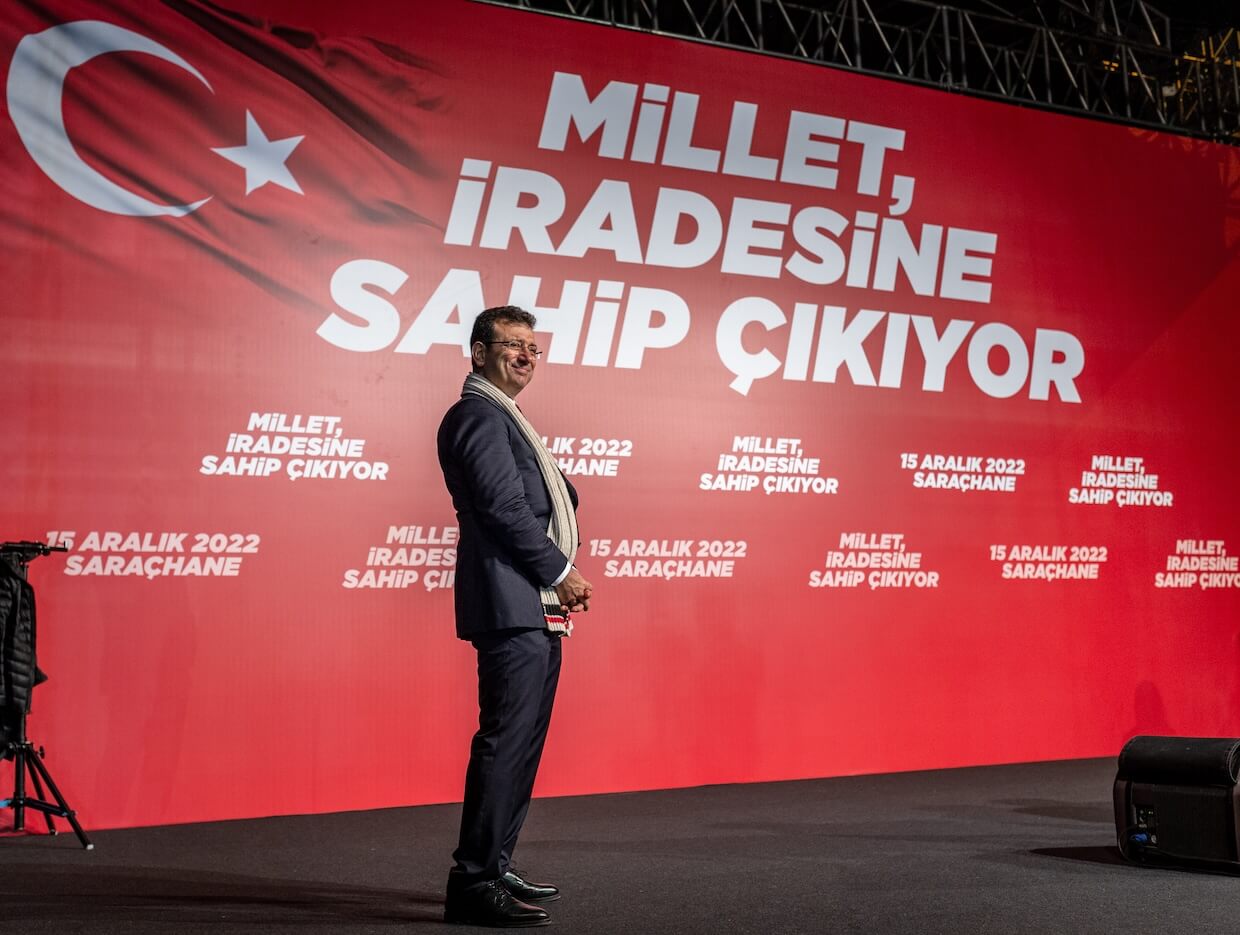
To what extent does the arrest of Ekrem Imamoglu mark a definitive rupture in Turkey’s evolution from competitive authoritarianism toward full-fledged autocracy—and does it reflect a broader erosion of political pluralism?
Dr. Spyros Sofos: I was always cautious about Imamoglu, because I really consider him a very astute politician—a politician who is not authoritarian per se, but who has realized that a kind of populism—which I find, I’m always suspicious of populism—was the means of defeating Erdogan. And I was always arguing that Imamoglu may be one of the best hopes of defeating Erdogan, but not populism. But that’s a fine detail we can talk about later.
So, I think that definitely the arrest of Imamoglu, his lawyers, and a lot of his collaborators is an important damage inflicted on the prospects of a more pluralistic political scene in Turkey.
Imamoglu, during his time as Istanbul mayor, has really tried to engage with the grassroots in ways that no other politician has ever done. So I think arresting him is also a kind of condemnation of his political project—of talking with grassroots, of trying to empower and mobilize communities in ways different from the AKP’s.
Therefore, I do believe that it is also an attempt not only at his person, but at the model of politics that could emerge out of a possible victory by Imamoglu. Now we’re seeing a more naked, fully fledged authoritarian move in Turkish politics.
I’ve heard all these discussions about who will succeed Erdogan, and sometimes family appears to be first in these discussions. It indicates that even the fig leaf of competitive authoritarianism is dropping at the moment. But it’s a very fluid situation. The intentions of Erdogan and his advisers may not lead to the results that they want to achieve. I think the regime is the more rigid it is, the more easily it breaks in some ways.
In your view, how has the personalization of power under Erdogan blurred institutional distinctions between the state, the ruling party, and the judiciary? Is the judiciary now operating more as an instrument of regime survival than of rule-of-law governance?
Dr. Spyros Sofos: Let me start from the judiciary, but I will go to the personalization in a minute. We’ve seen that the judiciary was the target of reforms and the target of a lot of meddling. Effectively, what was being planned was to render it less independent. We had all these kinds of promotions of different judges, the retirements of other judges, and so on. There have been pressures from time to time on the judiciary, so definitely the judiciary is no longer a means of checks and balances in the political system.
And this is the problem generally with the hyper-presidential system that Erdogan introduced. In some ways, there is no institution that has the gravitas and authority that the institution of the presidency has. Therefore, it’s not only the judiciary—even the Parliament, in many ways, although there are ways in which it can throw a spanner in the works, as we say—even the Parliament cannot really challenge the presidential dominance in the political system.
Now, if you add the personal charisma and its cultivation by Erdogan, the situation becomes even clearer. It’s not only an institution, but it’s also a president who in the past has spoken out against the courts. When the courts decided against him, he talked about the milletin iradesi—the national will—as superior to the courts’ legal rationale and thinking.
So we can see here that the personalization and the charisma that has been brought into politics is significant, even without the presidential system. But of course, now it is also institutionalized.
A final thought: I had written, when I was writing about Ataturk, that Ataturk had established a two-tier political system, in some ways. I’m simplifying now. One was, of course, the institutions of the Republic—the National Assembly and the party—and then two aborted experiments with the Liberal Party, and so on. And then there was another element—that was his person: the state as a person, and it was the person of Ataturk.
What I meant by this is that whereas the citizen in the villages of the Republic, would be harassed by the jandarma, would be suppressed in a variety of ways, then you would see Ataturk touring the countryside or the cities of the country and being the object or subject of adoration. He would hug kids, and he would talk to people in a charming way. I think Erdogan has done something very similar, and the personalistic element is crucial in that.
So there is a state that is really vicious—it can take passports away, put people into jail—and then you have Erdogan, who cannot do it as well as I think Ataturk did, but on the other hand, he is another facet of the state, unmediated. He talks to people, and he derives authority from this—not from his institutional position only.
Regime Insecurity and Western Complicity Feed Erdogan’s Authoritarian Drift
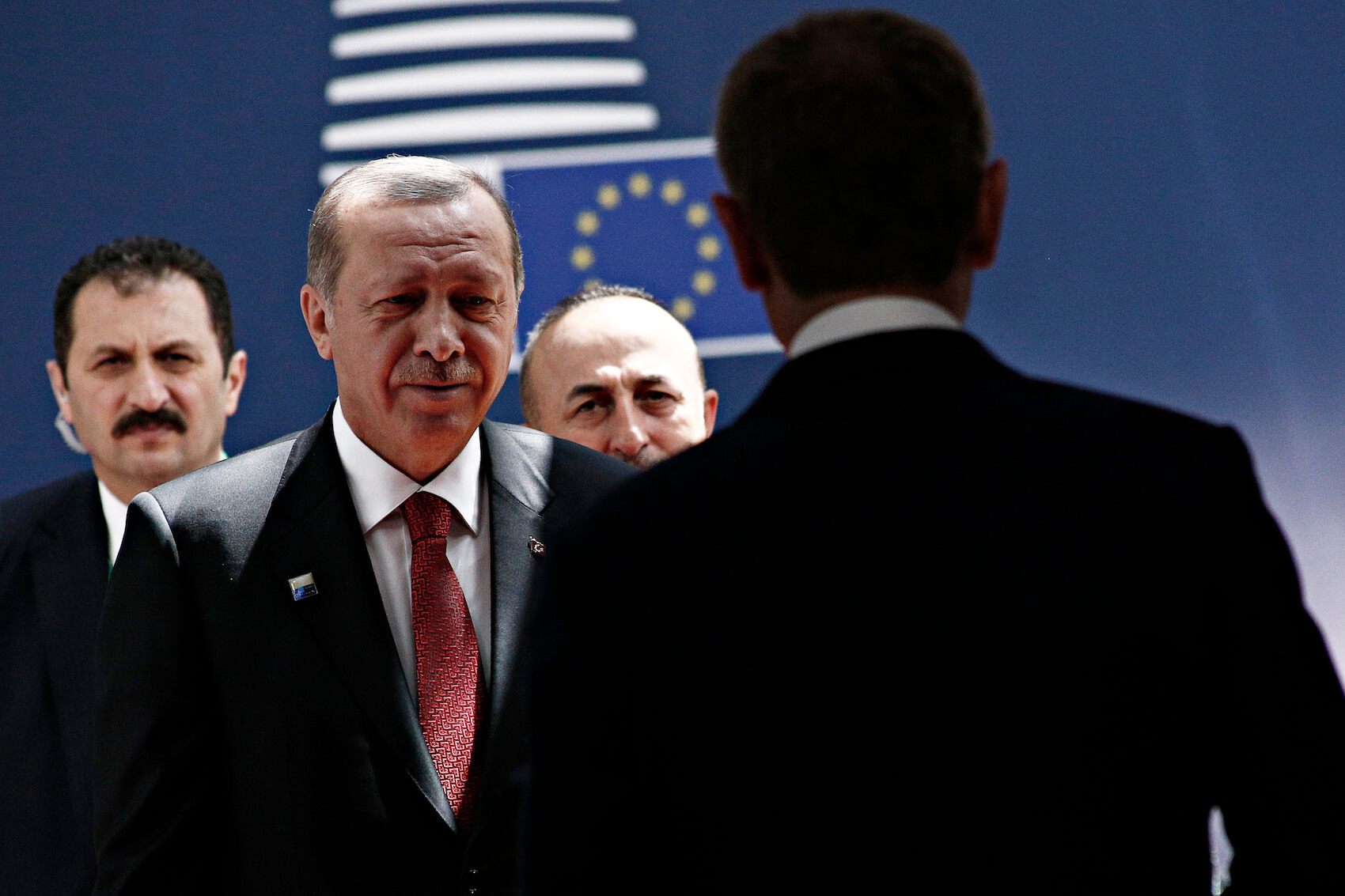
Would you frame the current authoritarian escalation as a sign of regime insecurity ahead of critical elections, or as part of a calculated strategy to secure post-electoral permanence through managed democracy and repression?
Dr. Spyros Sofos: I would not distinguish these two because they can work together. So what I would say is that we had seen a calculated attempt already in the autumn,
when Bahceli talked about PKK leader Abdullah Ocalan visiting the National Assembly, and he said that he treated him as an interlocutor. At the time, I was arguing—and I had written an article that, however, was published very recently—I was trying to say that this was a sign for me that Erdogan and others were feeling insecurity, as they had seen that the Kurdish movement had supported the opposition tacitly in most elections in the past. Therefore, they needed to ensure that this would not continue—that the Kurdish parties, the Kurdish organizations, the PKK would not continue supporting the opposition—and thus they attempted this Kurdish opening, this attempt to bring Kurdish politicians to the table, while keeping Selahattin Demirtas, who would be a charismatic figure that could challenge this possibility, in jail.
So, I think already at the time we could see that regime insecurity was at the center of the thinking of the current political elite. It’s not only Erdogan, it’s all these people who have made fortunes under Erdogan, and they want to maintain impunity and those fortunes. Therefore, they are also insecure, and they have the ear of people close to Erdogan, maybe Erdogan himself. So that’s the first thing.
The second thing is that this also prompts the political leadership at the moment to think that in order to counter this regime insecurity, a system that would limit the possibility of a challenge—political, electoral challenge—to the current incumbents would need to be in place. And therefore we have this leap from regime insecurity to a more authoritarian system that would allow the durability of the current regime in one way or another, and the impunity of those who have managed to benefit from it.
So both.
Do you interpret the EU’s and US’s muted response to Imamoglu’s arrest as tacit legitimation, strategic pragmatism, or democratic fatigue? To what extent does Western inaction enable further authoritarian entrenchment?
Dr. Spyros Sofos: The West, especially the European Union, has a lot to do with the current situation. Already, in the first decade of the century, they were getting cold feet about engaging with Turkey regarding membership or some sort of closer union with the EU. Now, they are much more cynical. They have been treating Turkey—and Turkey has been treating them—in a transactional way.
Effectively, what the EU and the US have been doing is wanting Turkey to ensure that the masses of displaced people within its territory would not move towards the West. In view of the war in Ukraine and the broader threats coming from Russia, they also want Turkey to be a cornerstone of some evolving security policy. I find it difficult to see how this will happen, but that seems to be the logic within Western political circles.
In this sense, now that Turkey has become strategically important for various aspects of Western European security, there seems to be a willingness to turn a blind eye to what is happening domestically in the country. Imamoglu himself said this very clearly, castigating European leaders for doing nothing—not just for failing to support him personally, but for abandoning the broader hope of democracy in Turkey.
I believe there is a general democratic fatigue in the West, especially as many Western governments are dealing with their own populist challenges. In addition, they are wary of creating a rift with Erdogan. There are several reasons for this, including domestic electoral considerations—such as the influence of Turkish communities in countries like Germany, the Netherlands, and Belgium.
Erdogan has also been actively engaging in the Balkans, including meddling in Bosnian affairs. Western leaders want to mute this influence. At the same time, they want Turkey to feel that it can benefit from supporting the security architecture of the EU and NATO, and to distance itself from closer ties with Russia. As a result, they are largely disinterested in democratic resistance inside Turkey.
Erdogan Leverages East-West Tensions to Shield His Regime from Accountability
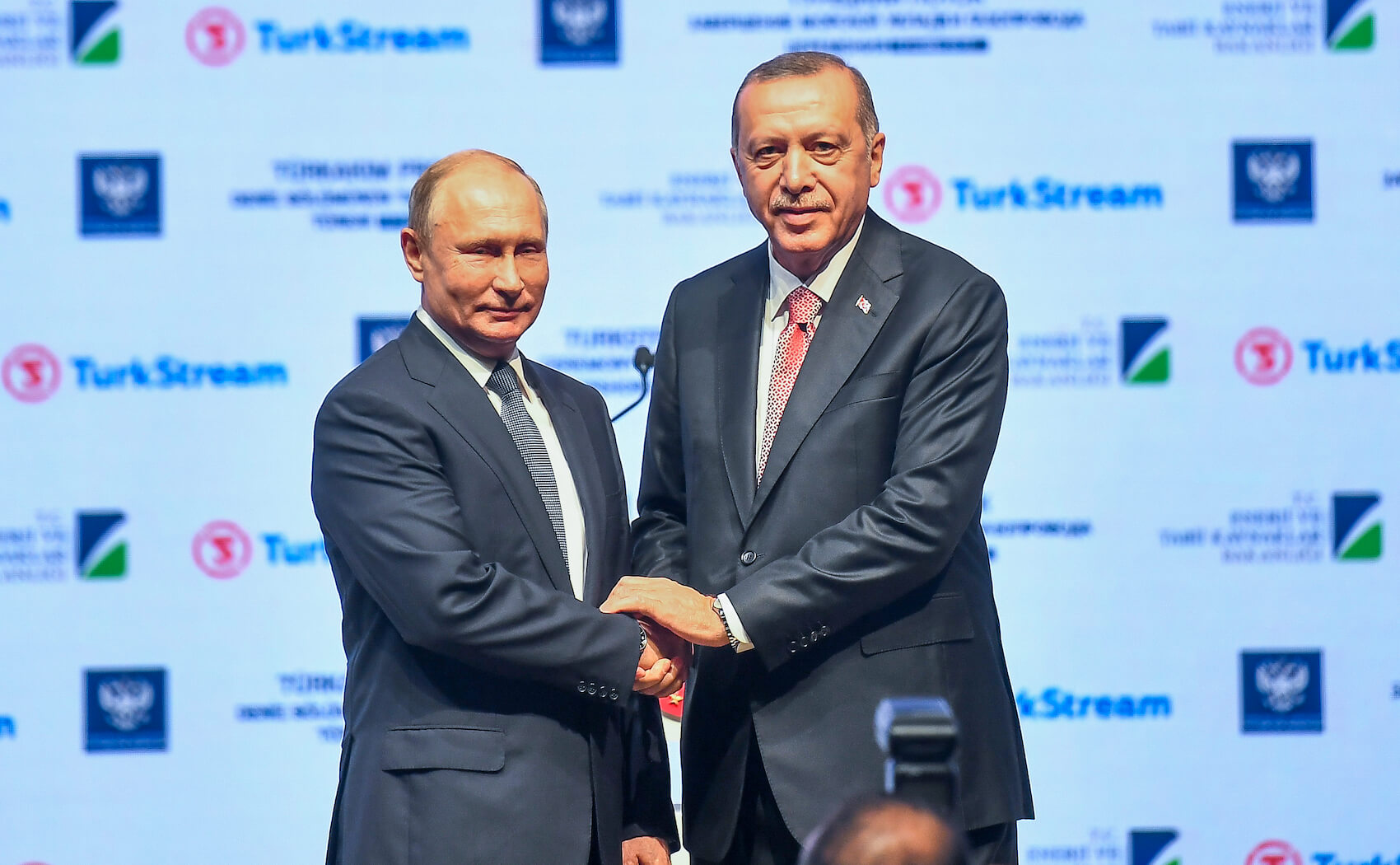
How does Erdogan’s external positioning—on migration with the EU, and regional geopolitics vis-à-vis Iran and Russia—insulate the regime from meaningful international pressure despite ongoing democratic erosion?
Dr. Spyros Sofos: Well, it relates to your previous question, but thank you for this, because it allows me to elaborate a bit more. I think that the positioning of Ankara toward Russia, Iran, and even Syria is quite significant, as it clearly reflects a strategy of leveraging different relationships to insulate the regime—from criticism and possibly even from sanctions. I’m not necessarily talking about economic sanctions.
Erdogan—specifically Erdogan, not necessarily Turkey—has been very skillful in cultivating relationships with both the Iranian leadership, including Khamenei and various conservative politicians, and with Putin. He has also played an active role in the Astana process dealing with the future of Syria, in which Iran and Russia have been central players.
So we can observe a two-pronged strategy here. First, Erdogan ensures that every time Turkey feels under pressure from the West, it can leverage one of these alternative relationships. Second, Turkey is simultaneously helping to develop and participate in institutions that undermine Western international influence.
For example, instead of engaging with the Geneva process on Syria, Turkey remains committed to the Astana process—a trilateral format involving three illiberal regimes deciding Syria’s future. More broadly, we now frequently see Turkey participating in efforts to build an alternative international institutional architecture—one that weakens those institutions capable of holding it accountable.
And lastly, Professor Sofos, how does Turkey’s trajectory under Erdogan challenge or confirm existing theoretical models of populist-authoritarian governance? Are we witnessing a uniquely Turkish path or a globally resonant pattern of democratic decay in hybrid regimes?
Dr. Spyros Sofos: Actually, I’m writing a book at the moment on this, and I am trying to argue that we can see similarities in the cases of Modi in India, Orban in Hungary—to some extent, although Hungary is not an emerging power like Turkey—and even in Israel, where very similar developments are taking place. The judicial reform attempt by Netanyahu could have been written by Erdogan, in many ways.
So what I’m trying to say is that, yes, there is definitely a uniquely Turkish way of building populism. I have struggled in the past to find ways in which the Turkish case can be meaningful for understanding populism, particularly authoritarian populism, more broadly. But leaving aside the particularly Turkish elements—like the century-long divide between those who benefited from the Kemalist reforms and those who were left behind—there is a kind of playbook that we can see being repeated or developed simultaneously in other parts of the world.
Turkey is one of the initiators of a number of political developments that are now being copied by other illiberal actors. But I also see a broader attempt to develop scripts of sliding toward illiberalism—what I would describe as an authoritarian version of populism. I should say, I consider populism—regardless of whether it is left or right—authoritarian in character. So I sometimes find it difficult to use the terms authoritarianism and populism together.
But yes, we can see this happening elsewhere, and therefore we are in for a rough ride. It’s not just one individual country that is affected. I think it’s about the way we are now thinking

